Welcome to Córdoba City, a captivating destination nestled in the heart of Argentina. Known for its rich blend of colonial history, vibrant culture, and breathtaking landscapes, Córdoba is a city that has a lot on tap.

As Argentina’s second-largest city, Córdoba is often overshadowed by Buenos Aires, but those who take the time to explore it are rewarded with an authentic taste of Argentine life. The city is renowned for its stunning colonial architecture, vibrant student culture, and nearby Sierras de Córdoba, making it a hub of both cultural and natural attractions.
source: Nomadic Samuel and That Backpacker on Samuel and Audrey YouTube Channel
Audrey and I had to run some errands here, so we finally had a chance to explore Cordoba city properly. Without the highest of expectations, we were pleasantly surprised. We found the city easy to navigate on foot. We loved taking in the colonial architecture and Jesuit buildings. Moreover, we found the food scene to rival that of Buenos Aires. Not too shabby at all.

A Blend of History and Modernity
Córdoba’s history stretches back over 400 years, and it shows in its well-preserved colonial landmarks. At the same time, it’s a city that buzzes with youthful energy thanks to its large student population. This mix of old and new makes for a fascinating experience as you walk through streets where Jesuit buildings stand side by side with trendy cafés, street art, and modern shopping districts.

- Colonial Heritage: The city’s Jesuit Block, a UNESCO World Heritage site, offers a glimpse into Argentina’s past.
- University Life: With one of the oldest universities in South America, the city has a vibrant student population that fuels its cultural scene.
- Modern Energy: Córdoba is constantly evolving, with a mix of art galleries, music festivals, and outdoor events adding a modern twist to the city’s historical foundation.
Tip: Don’t miss a visit to Plaza San Martín, the city’s main square, where colonial buildings provide a stunning backdrop to Córdoba’s lively street life.
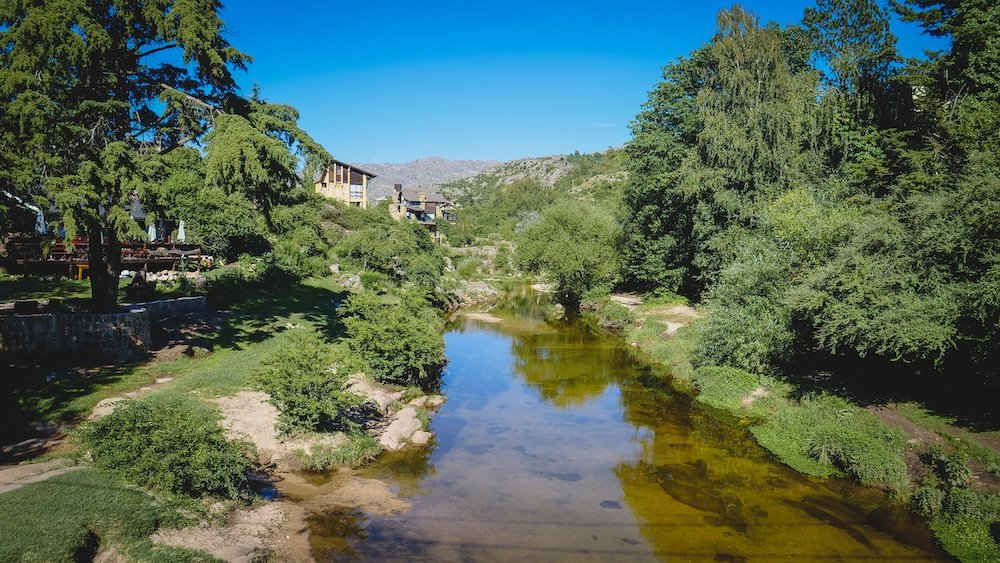
Natural Beauty at Your Doorstep
While the city itself is full of urban attractions, Córdoba’s natural surroundings are equally impressive. The Sierras de Córdoba, just a short drive away, offer endless opportunities for hiking, climbing, and outdoor exploration. Whether you’re looking to reconnect with nature or seek a peaceful escape, the surrounding countryside is filled with picturesque villages, serene lakes, and dramatic mountain views.
- Sierras de Córdoba: These nearby mountains offer countless opportunities for hiking, trekking, and even paragliding.
- Lago San Roque: A popular spot for water activities like boating, kayaking, and jet skiing, perfect for an adventurous day out.
- Scenic Drives: Explore charming villages like La Cumbrecita and Villa General Belgrano for a taste of Córdoba’s small-town charm.
Tip: Pack a picnic and head to the Sierras for a day of hiking and breathtaking scenery—it’s the perfect way to balance urban exploration with some time in nature.

Culture, Cuisine, and Nightlife
One of the best things about Córdoba is its thriving cultural scene. From its buzzing nightlife in Güemes to the fascinating museums and galleries, there’s never a shortage of things to do. The city’s culinary scene is also something to savor. With traditional Argentine flavors blending with international influences, Córdoba offers everything from casual street food to upscale dining experiences.
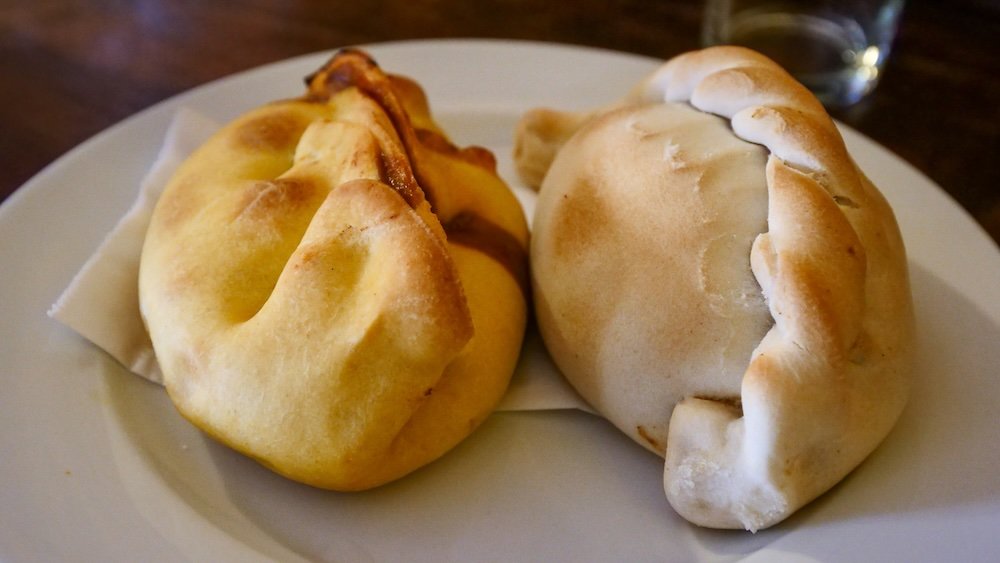
- Nightlife in Güemes: Known for its vibrant nightlife, this bohemian neighborhood is packed with bars, live music venues, and trendy restaurants.
- Local Cuisine: Feast on asado (Argentine barbecue) and try the region’s famous empanadas, along with local wines.
- Art and Culture: Check out the Evita Fine Arts Museum and the Emilio Caraffa Fine Arts Museum for a dose of local and international art.

Tip: Spend a weekend evening in Paseo de las Artes, a popular artisan market where you can find handcrafted goods, art, and enjoy some local street food.
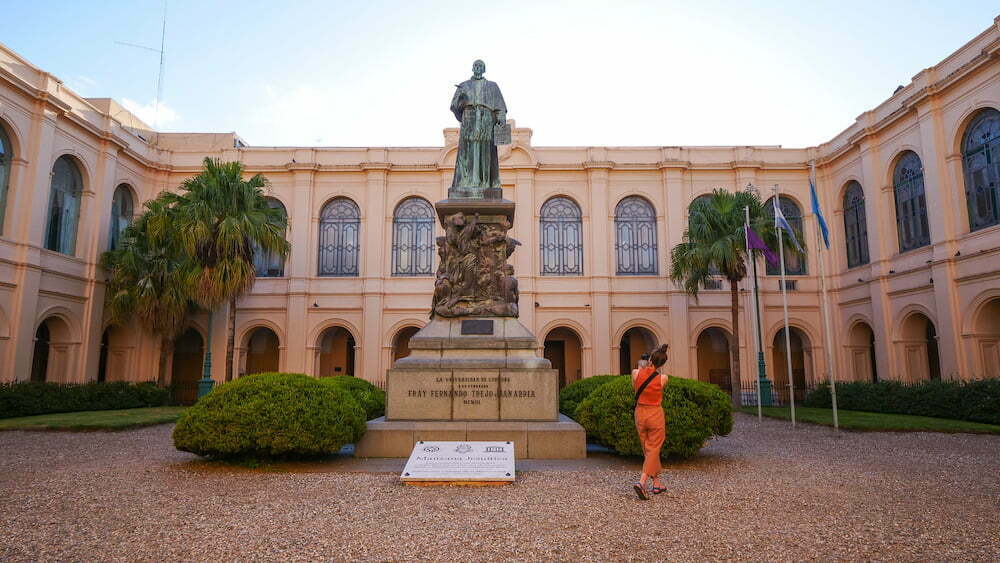
Why Córdoba Should Be on Your List
Whether you’re diving into the city’s Jesuit past, experiencing its thriving arts scene, or exploring the stunning countryside, Córdoba provides an authentic Argentine experience.
Come for the history, stay for the adventure, and leave with memories of a place that authentically embodies the spirit of Argentina.

Cordoba City Guide: A Brief History Of Cordoba, Argentina
Founded in 1573 by Jerónimo Luis de Cabrera, Córdoba City became one of the first Spanish settlements in what is now Argentina. The city’s strategic location along the Camino Real—the main route between Peru and the Atlantic—solidified its role as a key stop for travelers and traders during the Spanish colonial period.
The Early Jesuit Influence
One of the most significant chapters in Córdoba’s history is the profound impact of the Jesuits. In the early 1600s, the Jesuit Order established missions in the region, laying the foundation for Córdoba’s religious and educational importance. The Jesuit Block (Manzana Jesuítica), a UNESCO World Heritage site, became the heart of the Jesuits’ influence, consisting of churches, schools, and the National University of Córdoba, one of the oldest universities in the Americas.
- Jesuit Block: A UNESCO World Heritage site, showcasing the Jesuit Order’s role in education and religion.
- National University of Córdoba: Founded in 1613, it became the intellectual center of Argentina, shaping generations of scholars.
- Religious Influence: The Jesuits also played a key role in shaping the city’s religious character, which continues to this day.
Tip: A visit to the Jesuit Block offers a fascinating glimpse into the city’s colonial past and religious heritage.

Córdoba’s Role in Argentina’s Independence
As Argentina moved toward independence from Spain, Córdoba found itself at the center of political and military struggles. Initially, the city supported Spain during the Argentine War of Independence, but the tides turned when José de San Martín and his revolutionary forces began to gain momentum. Eventually, Córdoba aligned with the independence movement, becoming a part of the new Argentine Republic in the early 19th century.
- Colonial Ties: Córdoba’s initial loyalty to Spain caused early tension with revolutionary forces.
- Shift in Allegiance: The city eventually joined the fight for independence, contributing to the birth of the Argentine Republic.
- Post-Independence Growth: Following independence, Córdoba grew as an economic and educational center, attracting intellectuals and politicians.
Tip: The Cabildo in Plaza San Martín is a must-see for those interested in Córdoba’s role during the independence movement.
Academic and Cultural Renaissance
Córdoba’s intellectual influence grew significantly in the early 20th century, spurred by its renowned university. The University Reform of 1918—a student-led movement that called for more autonomy and democratization in higher education—originated in Córdoba. This movement spread across Latin America, cementing the city’s reputation as a beacon of progress and academic freedom.
- University Reform of 1918: A pivotal moment in Córdoba’s history that reshaped the Latin American education system.
- Intellectual Hub: Córdoba became a center for progressive thought, with students and academics shaping political discourse.
- Cultural Renaissance: The city’s academic prominence encouraged a flourishing of the arts, literature, and social movements.
Tip: Visit the National University of Córdoba and its surrounding areas to explore the historic influence of the University Reform.
Modern Córdoba: A Blend of Tradition and Progress
Today, Córdoba is a dynamic mix of old-world charm and modern vibrancy. Its historic roots are evident in its colonial architecture, Jesuit landmarks, and academic institutions, while its youthful population gives the city a lively, forward-thinking energy. As one of Argentina’s most culturally rich cities, Córdoba City continues to evolve.
- Colonial Landmarks: The city’s colonial architecture remains beautifully preserved, giving visitors a window into the past.
- Youthful Energy: With a large student population, Córdoba maintains a vibrant cultural and intellectual scene.
- Cultural Blend: Córdoba’s ability to balance its historic past with modern advancements is what makes it truly unique.
Tip: Explore the city’s eclectic neighborhoods like Güemes, where you’ll find a blend of historic sites and modern cafés, bars, and street art.
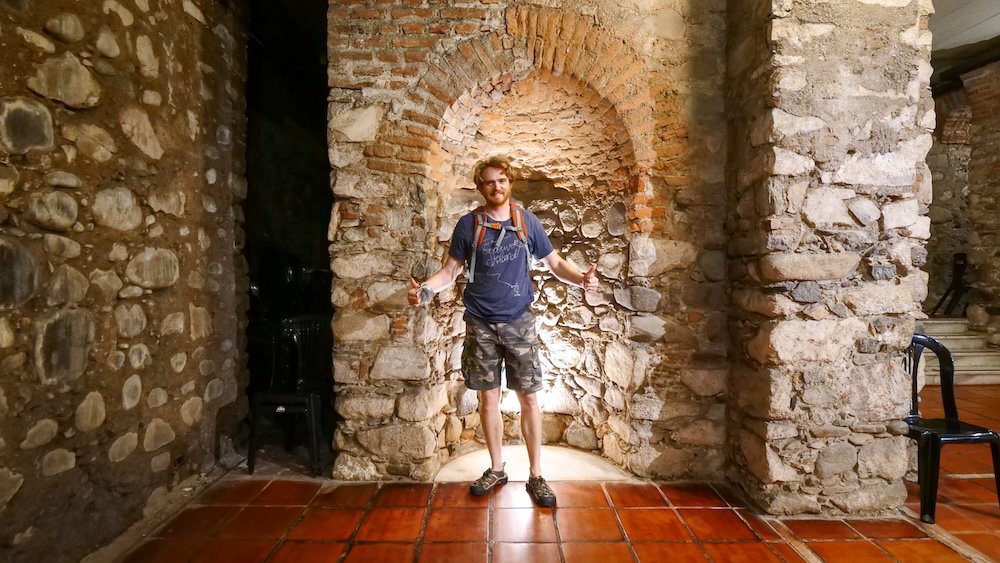
Cordoba Top Attractions and Best Places to Visit in Argentina
Situated within the agriculturally rich plains known as the Pampas, Cordoba Argentina is this nation’s second largest city.
As you might expect, it is home to its fair share of cultural institutions, but that isn’t all that this prairie city has to offer, as some truly noteworthy natural attractions sit just outside its borders.
With plenty of universities, Cordoba is also a very young city, giving it an energy that will make your visit here a fun and boisterous one.
Begin your visit to Argentina in Cordoba City by visiting the Jesuit Block and Estancias of Cordoba. Recognized by UNESCO as a world heritage site, this place is easily this city’s top must-see attraction for travelers on a tight schedule.
Run by the aforementioned Christian sect until they were thrown out in North America by a decree made by the Spanish crown, and then deposed again after their return a century later by an Argentine government order that nationalized their school, this complex is home to Argentina’s oldest university, as it was founded over four hundred years ago.
More Attractions
The Estancias were farming estates that help make this compound self-sustaining in a time when this part of Argentina was frontier country; together with the church and university buildings, visiting here is a great way to spend a sunny afternoon in Argentina’s second-largest city.
Cordoba is not only home to Argentina’s oldest university, but it is also home to the Cathedral of Cordoba, which is the oldest continually operating church in Argentina.
Containing elements of Spanish Baroque and Neoclassical architecture, this cathedral’s top draw is its silver altar, which was constructed in Peru and transported here during its construction.
Named a National Monument in 1941, the Cathedral of Cordoba is the final resting place of many important generals, bishops, and other figures that were prominent in Argentina’s history.
A recent development in Cordoba’s cultural scene has been the creation and dedication of Museo Superior de Bellas Artes Evita.
Opened in 2007 to critical acclaim, this institution contains works from the likes of Fernando Fader, Francisco Goya, and Pablo Picasso, all of which are housed in a mansion that used to belong to the governor of Cordoba.
Sitting just off Sarmiento Park, it is a great place to go before or after spending an afternoon in one of this city’s greatest public spaces.
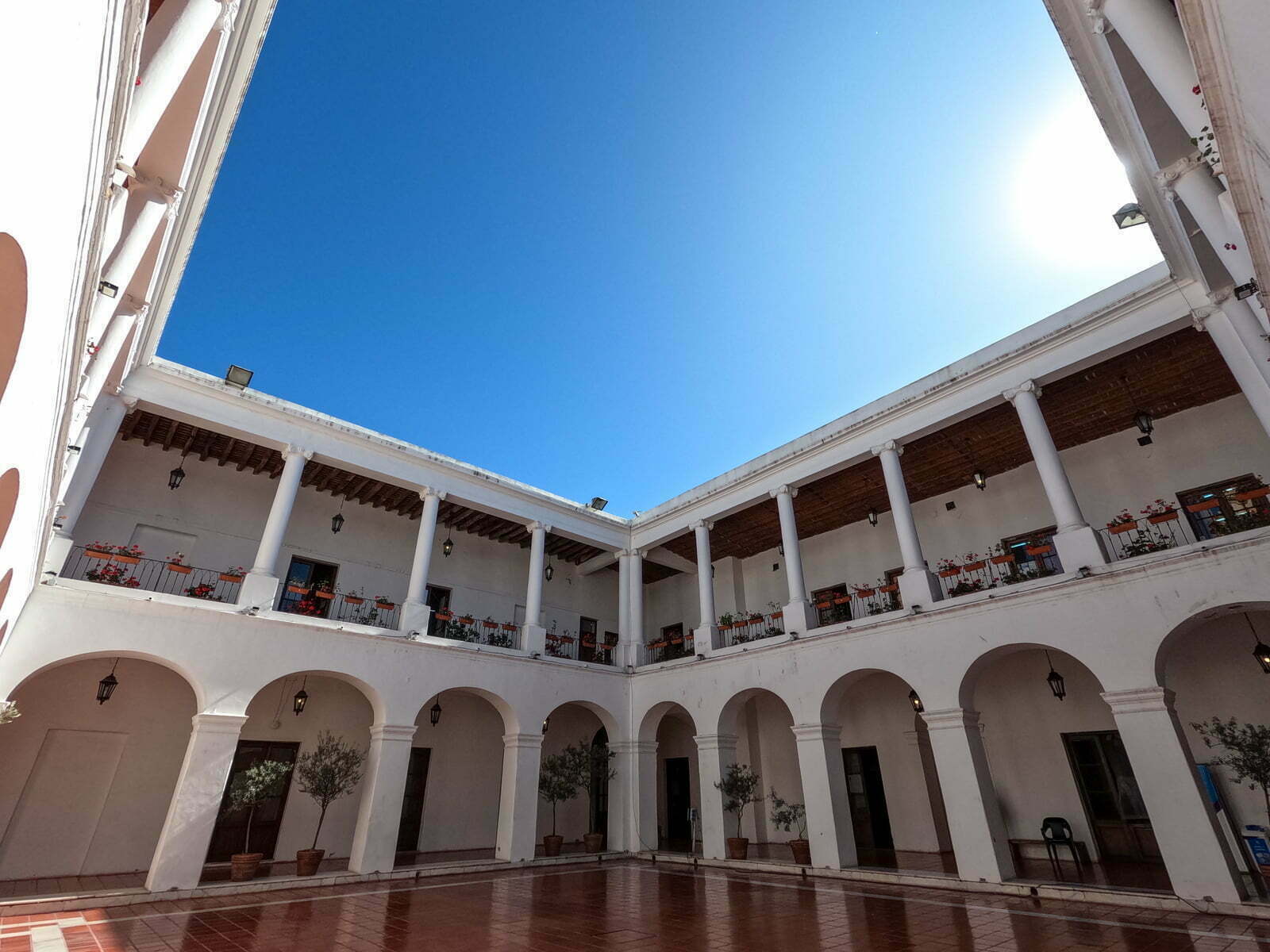
Other Cultural Attractions: Trip to Cordoba, Argentina
Cordoba Argentina is uniquely positioned within easy traveling distance of a pair of great day trips. The first of these will take you to Laguna Mar Chiquita, which is ranked as being the fourth largest salt lake in the world.
Once as dense as the Dead Sea, it has since been diluted by the expansion of its footprint, rendering it only as salty as typical ocean water. Despite this, it is a fairly shallow lake, enabling it to heat up quickly in summer time to temperatures as high as 25 degrees Celsius, making it a popular place for locals to go swimming, despite its less than photogenic appearance.
Along the southern shore, there are spa resorts where you can use the allegedly therapeutic mud from its shores to rejuvenate your body, and the salt marshes that line the northern shore are nothing short of a birdwatcher’s heaven.
Other Attractions
If you consider yourself an active traveler, you may want to head to Los Gigantes, as it is one of the nation’s fastest-growing rock climbing destinations. Take care to book a tour if you are not staying overnight, as there is only one bus that travels to this part of Cordoba province per day.
If you are, there are number of basic but cheap hostels and guesthouses that will cater to you and other enthusiastic rock scalers; don’t forget to bring a bottle of wine from town before coming out here so that you have plenty of wine to pass around for the apres climb festivities.
Staying in town instead? Observe the locals go about their daily lives at Sarmiento Park, which is Cordoba’s most beloved green space. Laid out by a French landscape artist, this beloved park resembles what you might expect to find in a city in France, as it contains many fountains, sculptures, lakes, and even a Greek amphitheater.
Aspects unique to this part of the world include numerous stands of palm trees, as well as the presence of outdoor restaurants known as lomiterias, which serve up all sorts of Argentine asado along with your choice of wine or beer during the warmer months of the year.
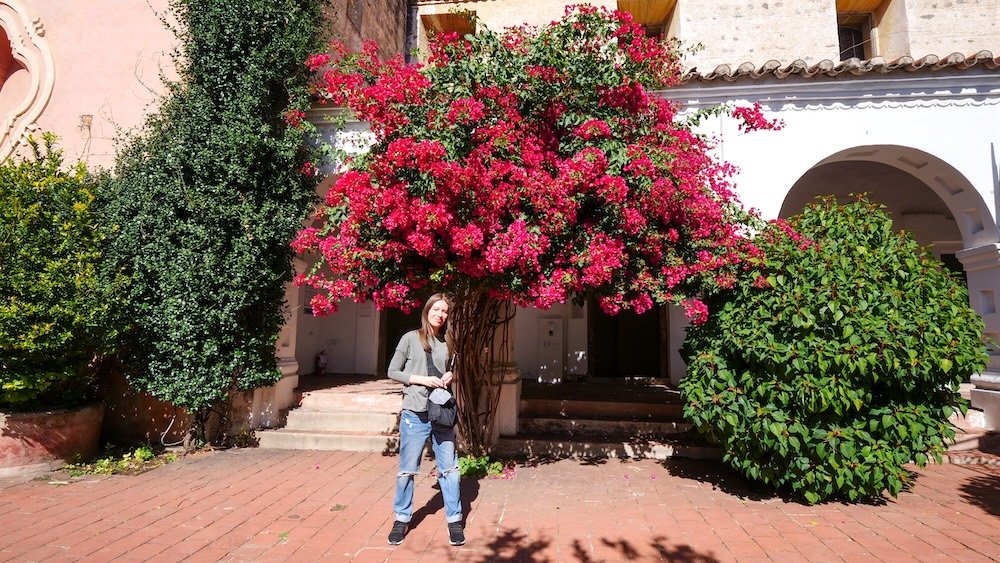
Top 25 Things To Do in Cordoba, Argentina For Visitors
Here are the top 25 things to do in Cordoba, Argentina:
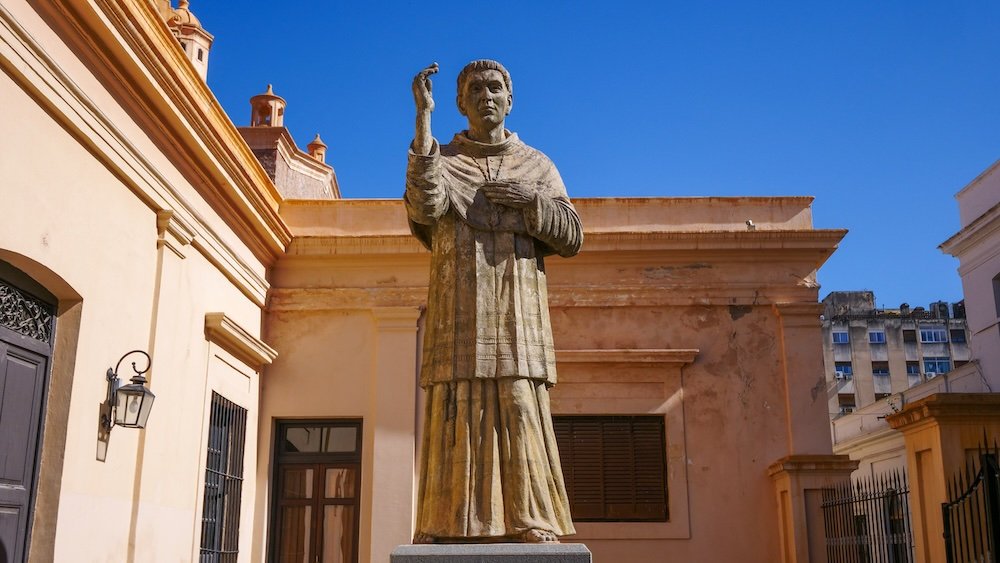
1. Visit the Jesuit Block and Estancias
A visit to Córdoba wouldn’t be complete without exploring the Jesuit Block and Estancias, a UNESCO World Heritage Site. This collection of 17th-century buildings showcases the deep influence of the Jesuits on the region’s culture and education. The Manzana Jesuítica includes churches, a university, and residences, offering a fascinating look into Argentina’s colonial past. Walking through these historical sites feels like stepping back in time.
- UNESCO World Heritage Site: Recognized globally for its historical and cultural significance.
- Architectural Marvels: Admire the beautifully preserved baroque architecture.
- Educational Tours: Learn about the Jesuits’ contribution to education and religion in Argentina.
Tip: Don’t miss the Iglesia de la Compañía de Jesús, one of the oldest churches in Argentina.
2. Explore Plaza San Martín
At the heart of Córdoba lies Plaza San Martín, a bustling square surrounded by historic buildings and lively street life. The plaza is a great starting point to explore the city, with the stunning Córdoba Cathedral and the Cabildo (the old town hall) located nearby. It’s a perfect spot to soak in the atmosphere, watch locals go about their day, or simply relax in the shade of the plaza’s trees.
- Historic Hub: The plaza has been the city’s central meeting place since colonial times.
- Córdoba Cathedral: Marvel at this grand structure’s intricate architecture and rich history.
- Street Performers: You’ll often find musicians, dancers, and artists showcasing their talents around the square.
Tip: Grab a coffee at a nearby café and enjoy some people-watching in the vibrant plaza.
3. Take a Hike in Parque Sarmiento
Parque Sarmiento is Córdoba’s largest green space and offers a refreshing escape from the city’s urban buzz. Designed by famous architect Carlos Thays, the park is a beautiful mix of manicured gardens, lakes, and walking paths. Whether you’re interested in a leisurely stroll, a paddleboat ride, or simply relaxing by the lake, Parque Sarmiento has something for everyone.
- Lush Greenery: The park features expansive lawns, ideal for picnics or a peaceful afternoon.
- Outdoor Activities: Enjoy cycling, jogging, or a paddleboat ride on the park’s lake.
- Cultural Spaces: The park is also home to museums and a zoo, perfect for family outings.
Tip: Visit during sunset for stunning views of the park’s landscapes and city skyline.
4. Visit the Evita Fine Arts Museum
Art lovers should make their way to the Evita Fine Arts Museum, housed in a stunning French-style mansion known as the Ferreyra Palace. The museum boasts an impressive collection of Argentinian and international art, spanning centuries and featuring works from the Renaissance to the modern era. With over 500 pieces of art, it’s a great way to spend an afternoon diving into Argentina’s rich artistic heritage.
- Elegant Architecture: The museum is housed in a beautiful early 20th-century mansion.
- Diverse Collection: View works from renowned artists such as Goya, Monet, and Picasso.
- Cultural Events: The museum frequently hosts temporary exhibitions, workshops, and cultural events.
Tip: Take a guided tour to get deeper insights into the museum’s most famous pieces and their historical context.
5. Discover Córdoba’s Nightlife in Güemes
When the sun sets, Córdoba’s Güemes district comes alive. This bohemian neighborhood is filled with trendy bars, restaurants, and artisanal markets that make it one of the best spots to experience the city’s nightlife. Stroll along Belgrano Street and pop into a bar for craft beer or enjoy some live music at one of the local venues. Güemes offers a taste of Córdoba’s youthful and creative spirit.
- Artisan Markets: Visit Paseo de las Artes to browse local crafts and art.
- Trendy Bars: Güemes is known for its lively bar scene, perfect for enjoying a night out with friends.
- Street Art: The neighborhood is filled with colorful murals and street art, adding to its vibrant atmosphere.
Tip: For a true Güemes experience, visit on the weekend when the markets and nightlife are in full swing.
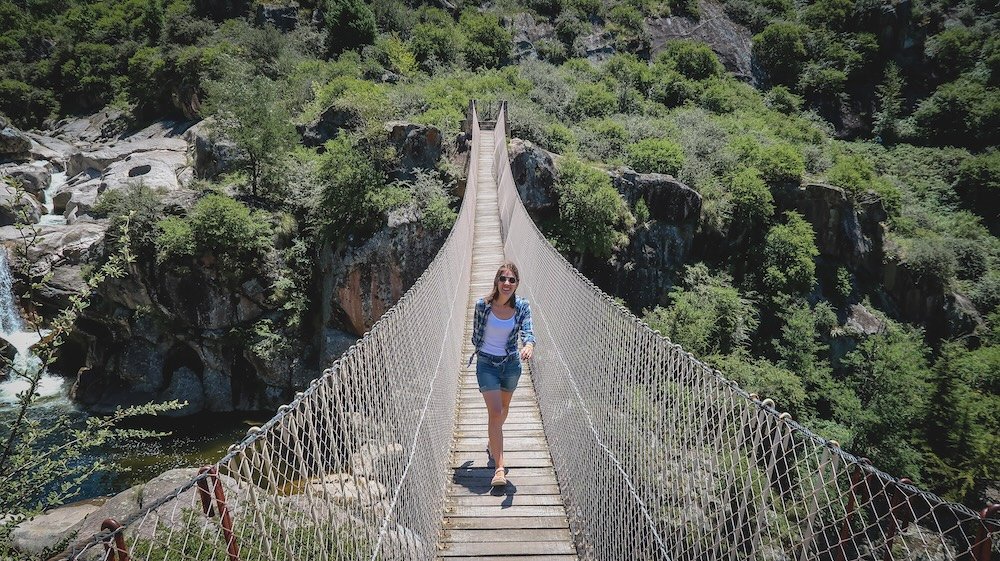
6. Hike the Sierras de Córdoba
Just outside the city, the Sierras de Córdoba offer a natural playground for outdoor enthusiasts. The rolling hills and rugged terrain are perfect for hiking, climbing, and camping. Whether you’re looking for a short day hike or a more challenging trek, the Sierras provide stunning views, crystal-clear rivers, and a chance to connect with nature.
- Stunning Landscapes: The Sierras feature picturesque valleys, rivers, and mountains.
- Outdoor Adventures: Go hiking, mountain biking, or explore the natural rock formations.
- Serene Getaways: Ideal for those looking to escape the city and immerse themselves in nature.
Tip: Visit La Cumbrecita, a charming, car-free village nestled in the Sierras, for a peaceful mountain retreat.
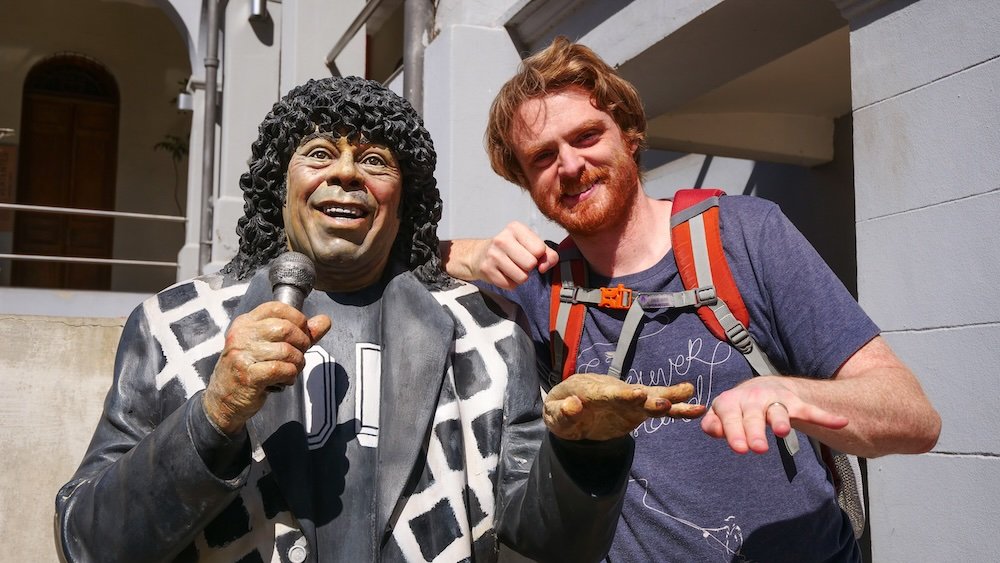
7. Experience Córdoba’s Festivals
Córdoba is known for its vibrant festivals, celebrating everything from folklore and tango to contemporary music and cinema. The city hosts several renowned festivals throughout the year, including the Cosquín Folklore Festival, which is the largest in Argentina. Attending one of these festivals is a fantastic way to experience the city’s lively culture and meet locals who take pride in their traditions.
- Folklore Festival: The annual Cosquín Folklore Festival attracts artists and spectators from across the country.
- Music and Cinema: Córdoba is also home to a thriving indie music and film scene, with events such as the Córdoba International Film Festival.
- Local Culture: These festivals provide a deep dive into Argentina’s music, dance, and art, making them a highlight for culture lovers.
Tip: If you’re visiting in January, the Cosquín Folklore Festival is a must-see for traditional Argentine music and dance.
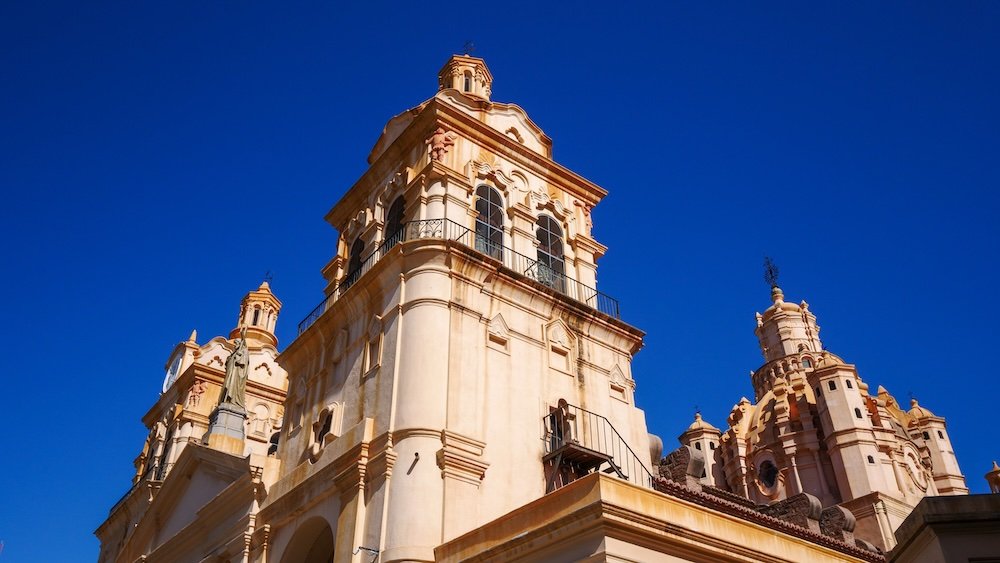
8. Tour the Córdoba Cathedral
Located in Plaza San Martín, the Córdoba Cathedral is an architectural masterpiece and one of the oldest colonial buildings in Argentina. This impressive structure took over two centuries to complete, which is reflected in its unique combination of baroque, neoclassical, and romanesque architectural styles. Inside, you’ll find stunning artwork, gold leaf details, and an air of quiet reverence that makes it a must-see for visitors.
- Historical Significance: The cathedral dates back to the early 17th century and stands as a symbol of Córdoba’s colonial past.
- Breathtaking Interior: The interior features beautiful frescoes, religious art, and intricate gold detailing.
- Central Location: Conveniently situated in the heart of the city, making it easy to visit during a day of sightseeing.
Tip: Visit during mass for a unique cultural experience, and don’t miss the beautiful lighting of the building at night.
9. Wander through Paseo del Buen Pastor
The Paseo del Buen Pastor is a cultural center located in a restored neoclassical building that was once a women’s prison. Today, it’s one of Córdoba’s most popular gathering places, offering a mix of art galleries, fountains, and cafés. The outdoor courtyard is a great spot to relax, and the lively atmosphere makes it a favorite with both locals and tourists. It’s a space where you can immerse yourself in Córdoba’s art scene or simply people-watch.
- Cultural Hub: Home to art exhibitions, live performances, and cultural events throughout the year.
- Beautiful Courtyard: Relax by the fountains or grab a drink at one of the trendy cafés.
- Fountain Show: Don’t miss the light and water show at the central fountain, a nightly event that adds a magical touch to the space.
Tip: Visit in the evening to catch the fountain show and enjoy the vibrant nightlife in and around Paseo del Buen Pastor.
10. Enjoy a Day Trip to Alta Gracia
Just a short drive from Córdoba lies Alta Gracia, a picturesque town known for its Jesuit heritage and historical significance. One of the town’s main attractions is the Casa del Che Museum, the childhood home of revolutionary leader Che Guevara. In addition to its historical sites, Alta Gracia boasts scenic landscapes, making it a great escape from the city.
- Casa del Che Museum: Visit the home where Che Guevara spent his early years and learn about his life and legacy.
- Jesuit Sites: Explore Nuestra Señora de la Merced, a beautifully preserved Jesuit church that dates back to the 1600s.
- Relaxing Atmosphere: Alta Gracia is the perfect place for a laid-back day trip with peaceful parks and charming streets.
Tip: Combine your visit with a tour of Estancia Alta Gracia, another Jesuit site that highlights the area’s rich colonial history.
11. Discover Mercado Norte
For an authentic taste of Córdoba’s local life, head to Mercado Norte, a bustling market where you’ll find everything from fresh produce and meat to local delicacies. This vibrant market is the best place to experience the city’s culinary culture up close, with vendors selling fresh empanadas, alfajores, and more. Whether you’re looking to sample local food or shop for unique ingredients, Mercado Norte is a must-visit.
- Local Flavors: Sample traditional dishes like choripán, asado, and empanadas from local vendors.
- Bustling Atmosphere: Experience the hustle and bustle of a traditional Argentine market.
- Fresh Produce: Stock up on fresh fruits, vegetables, and meats if you’re planning to cook or just looking for a snack.
Tip: Be sure to try the locro, a hearty stew that’s a local favorite and perfect for colder days.
12. Take a River Walk along Suquía River
For a peaceful break from the city’s lively streets, take a stroll along the Suquía River, which runs through the heart of Córdoba. The riverside path is ideal for walking, jogging, or biking, offering serene views of the water and the surrounding parks. This quiet, green space is perfect for unwinding and enjoying a bit of nature without leaving the city.
- Serene Escape: A peaceful riverside path offering a break from the bustling city.
- Outdoor Activities: Ideal for walking, jogging, or renting a bike to explore the area.
- Scenic Views: Enjoy picturesque views of the river, bridges, and surrounding greenery.
Tip: Stop by the Paseo de las Artes market on the weekend for a unique blend of art, crafts, and street performances near the river.
13. Visit the Cabildo de Córdoba
The Cabildo is another important historical building in Córdoba, located right next to Plaza San Martín. This former town hall dates back to the 17th century and has witnessed much of the city’s colonial and post-colonial history. Today, it serves as a cultural center that hosts exhibitions, events, and historical displays. The building’s beautiful colonial architecture and tranquil courtyard make it a great place to spend some time learning about Córdoba’s past.
- Colonial Architecture: The Cabildo is a well-preserved example of Spanish colonial design with its iconic arches and open courtyard.
- Cultural Exhibits: Learn more about the history and culture of Córdoba through rotating exhibitions and historical displays.
- Central Location: Located in the heart of the city, it’s easy to stop by after exploring nearby Plaza San Martín.
Tip: Visit during a local event or exhibition to see how the building is used to engage the community today.
14. Discover Córdoba’s Street Art
Córdoba has developed a reputation as a hub for street art, with murals and graffiti adding vibrant colors to its walls and alleys. The neighborhood of Güemes is particularly known for its creative street art scene, where talented local artists transform urban spaces into outdoor galleries. Walking through the city, you’ll find a mix of political art, social commentary, and abstract works, giving you a glimpse into the city’s modern, artistic soul.
- Vibrant Murals: Discover colorful street art that reflects the city’s culture, politics, and creativity.
- Güemes District: Explore one of the city’s most artistic neighborhoods, known for its murals and bohemian vibe.
- Local Talent: Many of the murals are created by local artists, showcasing the unique voices of Córdoba’s art scene.
Tip: Take a guided street art tour to learn about the meaning behind some of the most significant murals.
15. Visit the Cripta Jesuítica (Jesuit Crypt)
Beneath the bustling streets of Córdoba lies a hidden treasure: the Cripta Jesuítica, or Jesuit Crypt. This underground chamber was once used by Jesuit priests in the 18th century before being forgotten for over a century. Rediscovered in the 1980s, the crypt has been carefully restored and is now open to the public. A visit here offers a fascinating glimpse into the city’s hidden history.
- Hidden History: Explore this underground crypt and learn about the Jesuits’ influence on Córdoba’s development.
- Mysterious Atmosphere: The dimly lit, ancient stone walls create a mystical and reflective experience.
- Restoration Success: After being rediscovered, the crypt has been beautifully restored and is now a significant historical site.
Tip: The crypt often hosts small art exhibitions and cultural events, adding another layer of intrigue to your visit.
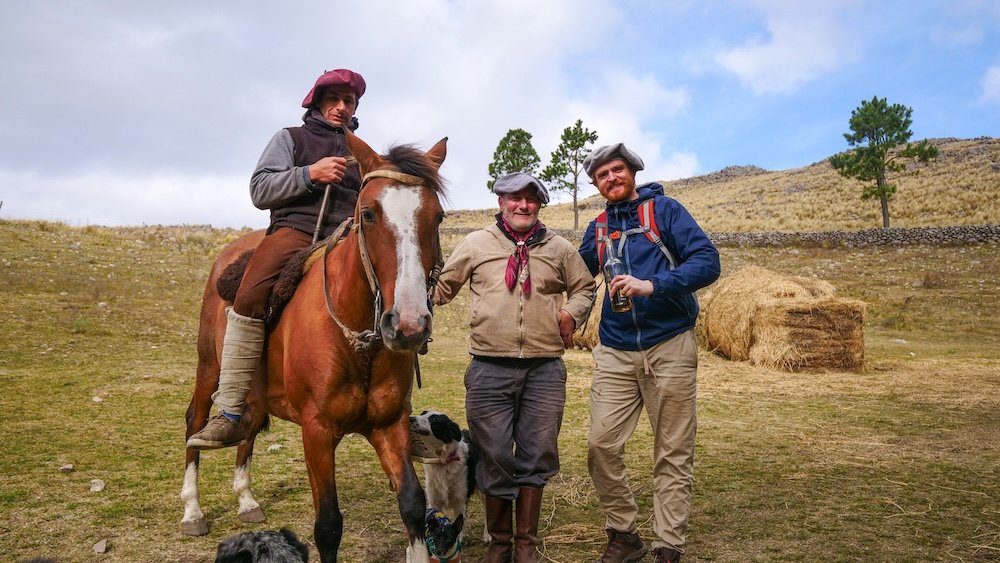
16. Go Horseback Riding in the Sierras
For a unique and authentic Argentine experience, consider going horseback riding in the Sierras de Córdoba. Local ranches and tour operators offer horseback excursions that take you through rolling hills, forests, and scenic valleys. It’s an incredible way to connect with nature while experiencing a piece of Argentina’s gaucho culture.
- Scenic Trails: Ride through beautiful mountain landscapes and take in panoramic views of the Sierras.
- Gaucho Experience: Learn about the local traditions of Argentina’s cowboys, or gauchos, as you ride.
- Relaxing Adventure: Horseback riding is a peaceful way to explore the natural beauty of the region.
Tip: Many tours offer lunch stops at local estancias (ranches), where you can enjoy a traditional asado (Argentine barbecue).
17. Experience Feria Artesanal Paseo de las Artes
Every weekend, Feria Artesanal Paseo de las Artes comes alive in the Güemes district, turning the streets into a lively marketplace filled with handmade crafts, art, and local products. It’s one of the best spots to find unique souvenirs and gifts, from jewelry and clothing to home decor and ceramics. The market’s bohemian atmosphere makes it a must-see for anyone wanting to experience Córdoba’s creative culture.
- Handcrafted Goods: Browse a wide variety of unique, handmade products from local artisans.
- Vibrant Atmosphere: The fair is always buzzing with locals and tourists alike, creating a lively atmosphere.
- Bohemian Vibe: Güemes is known for its artistic flair, and the market is a reflection of the neighborhood’s creativity.
Tip: Visit in the late afternoon or early evening when the market is in full swing and the local bars start to open up.
18. Take a Trip to Villa Carlos Paz
Located just outside Córdoba, Villa Carlos Paz is a popular getaway destination known for its lakeside views and relaxed atmosphere. This resort town is perfect for a day trip or weekend escape, offering activities like boating, hiking, and paragliding. It’s especially lively in the summer months, when tourists flock to the area for outdoor fun.
- Water Activities: Enjoy boating, swimming, and jet-skiing on Lago San Roque.
- Mountain Views: Hike to the top of Cerro de la Cruz for panoramic views of the town and lake.
- Family Friendly: With plenty of parks, rides, and attractions, Villa Carlos Paz is great for families.
Tip: If you visit in the evening, be sure to catch a show at one of the town’s many theaters, which host live performances year-round.
19. Visit Iglesia del Sagrado Corazón (Church of the Sacred Heart)
The Iglesia del Sagrado Corazón, also known as the Capuchin Church, is one of Córdoba’s most stunning architectural marvels. Designed by architect Augusto Ferrari, this neo-Gothic masterpiece is a striking mix of elaborate details, soaring spires, and vibrant colors. Inside, the church is just as impressive, with beautifully crafted stained glass windows and intricate wood carvings. It’s a must-visit for architecture enthusiasts and those looking to experience a piece of Córdoba’s religious history.
- Neo-Gothic Design: The intricate details and grand scale of the church make it a standout piece of architecture in the city.
- Stained Glass Windows: Inside, the church features beautiful stained glass that lights up the space in a kaleidoscope of colors.
- Peaceful Atmosphere: Even if you’re not religious, the serene interior provides a peaceful retreat from the busy city streets.
Tip: Visit in the late afternoon to see the sunlight streaming through the stained glass for a breathtaking effect.
20. Explore the Museo de Ciencias Naturales
For a change of pace, spend a few hours at the Museo de Ciencias Naturales, Córdoba’s premier natural history museum. Located in the Sarmiento Park, this museum offers fascinating exhibits on geology, paleontology, and local biodiversity. The impressive dinosaur skeletons and fossils are a hit with visitors of all ages, while the hands-on exhibits provide an interactive learning experience.
- Dinosaur Exhibits: See life-sized dinosaur skeletons and learn about the prehistoric creatures that once roamed Argentina.
- Interactive Displays: The museum offers interactive exhibits that are both educational and fun, making it great for families.
- Local Wildlife: Discover the diverse ecosystems of Argentina and the creatures that inhabit them.
Tip: Combine your visit with a walk around Sarmiento Park for a relaxing afternoon in nature.
21. Go Shopping on Nueva Córdoba’s Hip Streets
Nueva Córdoba is one of the city’s trendiest neighborhoods, known for its boutiques, cafés, and bustling student life. Whether you’re looking to update your wardrobe or find the perfect Argentine souvenir, Nueva Córdoba is the place to shop. Stroll down Hipólito Yrigoyen Avenue, where you’ll find everything from high-end fashion to local designer shops. The area also has a great café scene, perfect for a coffee break in between shopping sprees.
- Trendy Boutiques: Discover local fashion brands and unique shops offering Argentine-made goods.
- Bustling Vibe: As one of the city’s student hubs, Nueva Córdoba is always lively and full of energy.
- Café Culture: Take a break in one of the neighborhood’s stylish cafés for a cortado or alfajor.
Tip: Visit on weekends when the street markets pop up, offering handcrafted goods and unique finds.
22. Learn at the Museo de la Memoria
The Museo de la Memoria is a sobering but essential stop in Córdoba. Housed in a former secret detention center, this museum is dedicated to the memory of those who suffered during Argentina’s Dirty War in the 1970s. The exhibits here are powerful, offering personal stories, photographs, and documents that bring this dark period of Argentine history to life. It’s a moving experience and a reminder of the importance of human rights and justice.
- Historical Significance: The museum preserves the memory of the victims of Argentina’s military dictatorship.
- Emotional Exhibits: The personal stories and artifacts on display offer a poignant and powerful look at this chapter of Argentine history.
- Important Legacy: The museum encourages reflection on the importance of democracy, human rights, and justice.
Tip: Take time to read the personal letters and photographs—they provide a deeply human perspective on the historical events.
23. Experience Córdoba’s Tango Scene
While Buenos Aires may be the capital of tango, Córdoba has its own vibrant tango culture. The city’s milongas (tango dance halls) offer visitors the chance to experience this passionate dance in a more intimate and local setting. Whether you’re an experienced dancer or just a curious traveler, Córdoba’s milongas welcome everyone. Enjoy an evening of live music, sultry dance, and the rich traditions of tango in Córdoba.
- Local Milongas: Dance the night away at one of Córdoba’s many milongas, where both locals and visitors come together to enjoy the tango.
- Tango Lessons: If you’re new to the dance, take a beginner’s class before hitting the dance floor.
- Live Music: Many milongas feature live tango bands, adding to the authenticity and energy of the night.
Tip: Wear comfortable shoes and immerse yourself in the dance—even if you’re just watching, the atmosphere is electric.
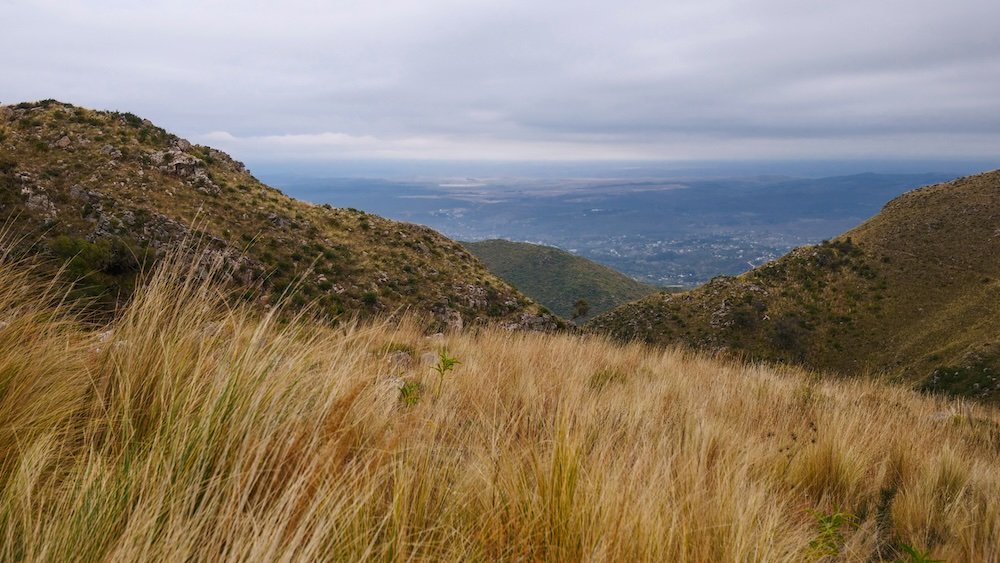
24. Take a Road Trip to the Sierras Chicas
If you’re up for a scenic road trip, head out to the Sierras Chicas, located just outside of Córdoba. This stunning mountain range offers picturesque drives, charming small towns, and outdoor adventures like hiking and rock climbing. The region is perfect for a weekend getaway or a relaxing day trip, allowing you to experience the natural beauty and peaceful landscapes of the Argentine countryside.
- Picturesque Towns: Visit small mountain towns like La Falda and La Cumbre, known for their peaceful atmospheres and outdoor activities.
- Outdoor Activities: Explore the area’s hiking trails, mountain biking routes, and climbing spots.
- Stunning Views: Enjoy panoramic vistas of the rolling hills and valleys as you drive through the Sierras.
Tip: Pack a picnic and stop at one of the scenic lookouts for a quiet moment surrounded by nature.
25. Stroll through Barrio General Paz
For a taste of Córdoba’s neighborhood charm, take a walk through Barrio General Paz. This leafy district is known for its wide avenues, European-style buildings, and relaxed vibe. It’s less touristy than the city center, making it an ideal spot to explore local life. The area is also home to a number of boutique shops, cafés, and restaurants, perfect for a leisurely afternoon.
- Architectural Beauty: The neighborhood is filled with well-preserved European-style homes and buildings.
- Café Culture: Enjoy a coffee or a meal at one of the many local cafés that line the streets.
- Local Life: Experience the laid-back, everyday life of Córdoba’s residents as you stroll through this charming barrio.
Tip: Be sure to stop by Plaza Alberdi, a beautiful square where locals gather to relax under the trees.
source: Nomadic Samuel and That Backpacker on Samuel and Audrey YouTube Channel
What To Eat and Drink in Cordoba, Argentina
Córdoba is a city that doesn’t just impress with its architecture and history—it also boasts a diverse and flavorful food scene. Let’s explore some of its most scrumptious dishes.
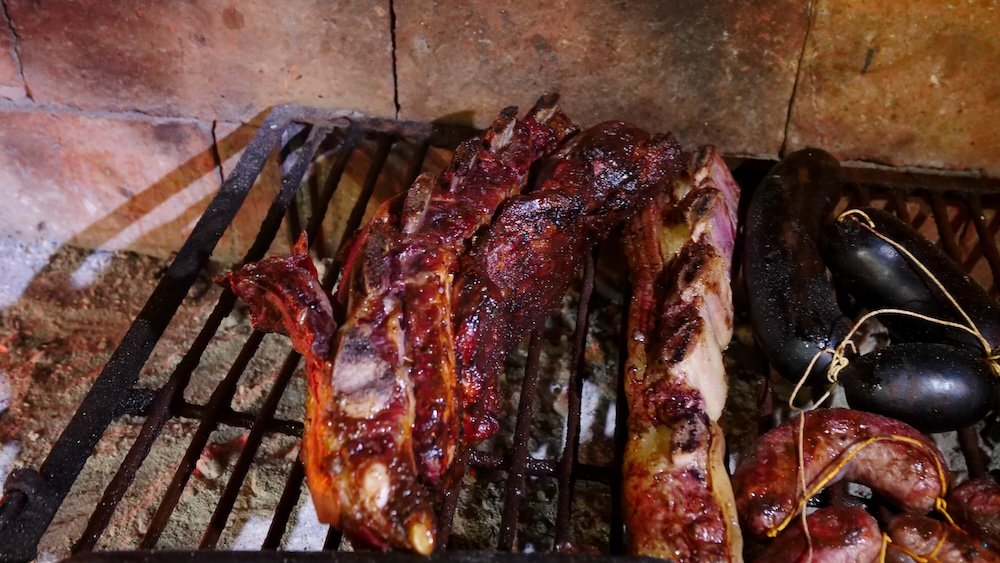
1. Asado – The Classic Argentine Barbecue
No trip to Córdoba, or Argentina for that matter, is complete without experiencing a proper asado. This traditional Argentine barbecue is not just a meal; it’s a social event. The asador (grill master) slowly cooks various cuts of beef, pork, and sausages over a wood-fired grill, resulting in smoky, juicy, and incredibly flavorful meat. Pair your asado with chimichurri sauce and a glass of Malbec, and you’ve got a meal you won’t forget.
- Best Cuts: Look for bife de chorizo (sirloin steak) and costillas (ribs) for the best flavors.
- Sausages: Don’t miss the chorizo and morcilla (blood sausage), both staples of a traditional asado.
- Chimichurri: This iconic Argentine sauce made from parsley, garlic, and vinegar adds the perfect tang to your grilled meats.
Tip: For an authentic experience, head to a local parrilla and enjoy asado the way locals do—slow, relaxed, and with good company.
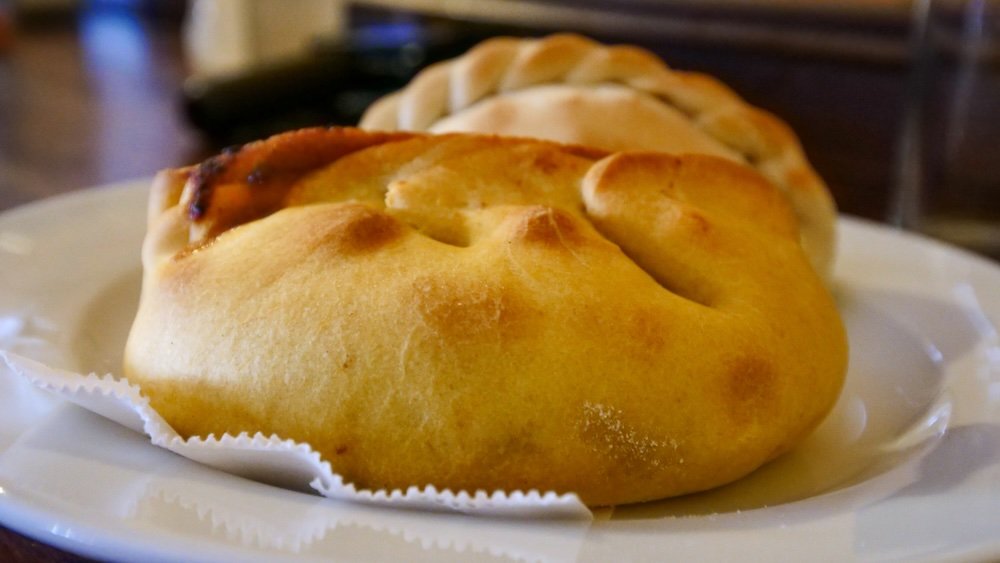
2. Empanadas – Argentina’s Favorite Snack
Empanadas are a must-try in Córdoba. These hand-held pockets of dough are stuffed with a variety of fillings, ranging from savory to sweet. The most common type is empanada de carne, filled with seasoned ground beef, onions, and hard-boiled eggs. However, you’ll also find delicious versions stuffed with ham and cheese, chicken, or even spinach for a lighter option. Crispy on the outside and bursting with flavor on the inside, empanadas are perfect for a quick snack or light meal.
- Meat Filling: The classic empanada de carne is filled with spiced beef, often including olives and boiled egg for extra texture.
- Vegetarian Options: Look for empanadas filled with cheese and spinach or corn for a meat-free alternative.
- Regional Twist: Córdoba’s empanadas often have a sweeter touch, with a hint of sugar in the dough or filling.
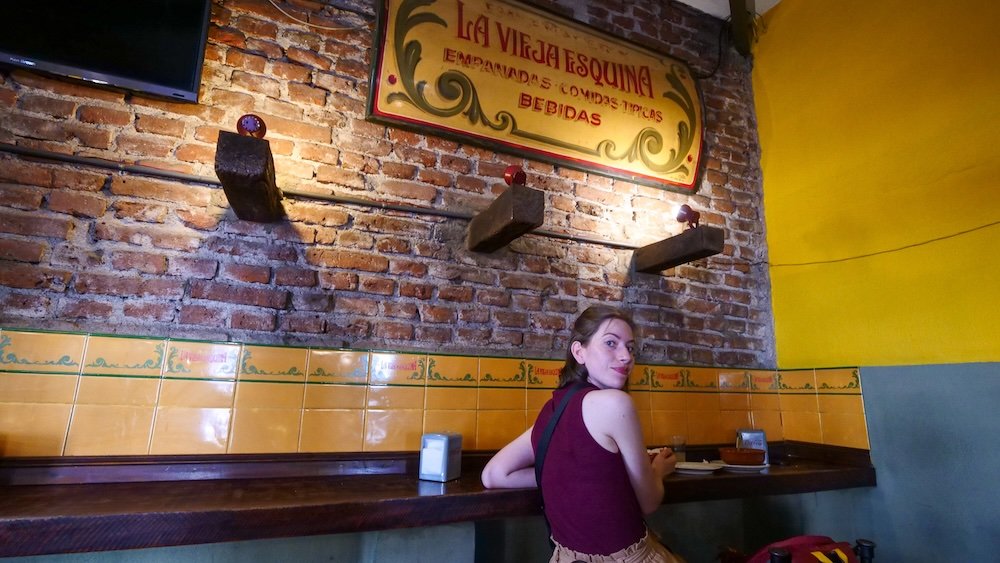
Tip: Head to La Vieja Esquina, a local favorite, to sample some of the best empanadas in the city.
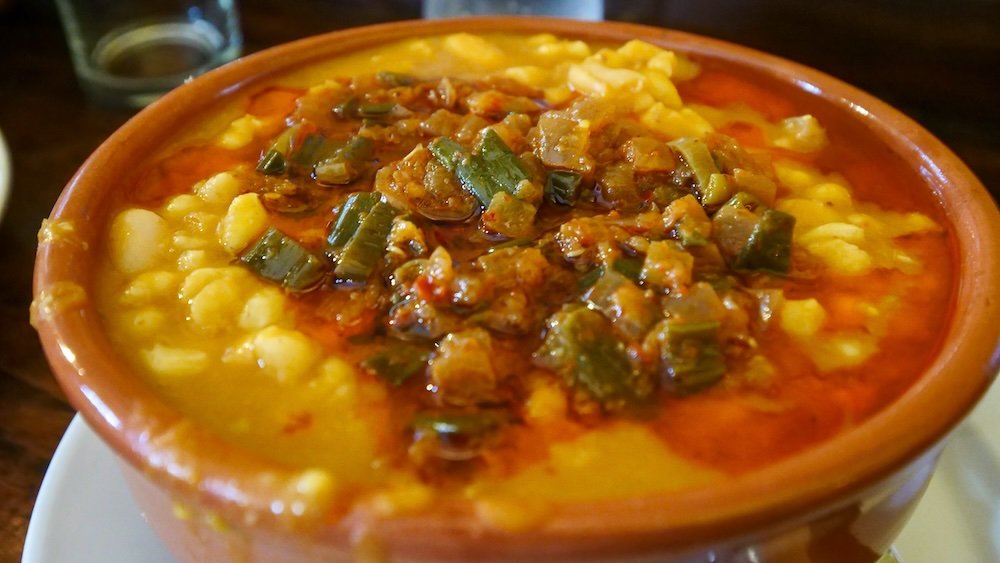
3. Locro – A Hearty Stew
Locro is the ultimate Argentine comfort food, especially popular during winter months and on national holidays like May 25th (Argentina’s Independence Day). This hearty stew is made from corn, beans, chorizo, and pork, simmered together for hours to create a rich, flavorful dish. It’s filling, warming, and a great example of the traditional Creole cuisine of Argentina. Many locals top their locro with fried onions and a spoonful of spicy aji (pepper sauce) to give it an extra kick.
- Hearty Ingredients: The stew is a mix of corn, potatoes, chorizo, and chunks of pork, creating a filling and satisfying meal.
- Popular Season: Locro is especially common during Argentina’s winter months and national holidays.
- Toppings: Locals love to add fried onions and a bit of spicy aji to bring the dish to life.
Tip: Try locro at a local peña (traditional folk restaurant) for an authentic taste of this iconic Argentine dish.

4. Lomito – Córdoba’s Take on the Sandwich
If you’re in the mood for something quick yet satisfying, a lomito is the perfect choice. This Argentine steak sandwich is a favorite street food in Córdoba, often piled high with tender beef, ham, cheese, lettuce, and tomato. It’s typically served with a side of crispy fries and sometimes topped with a fried egg. Lomitos are filling, indulgent, and great for a late-night bite or a casual meal on the go.
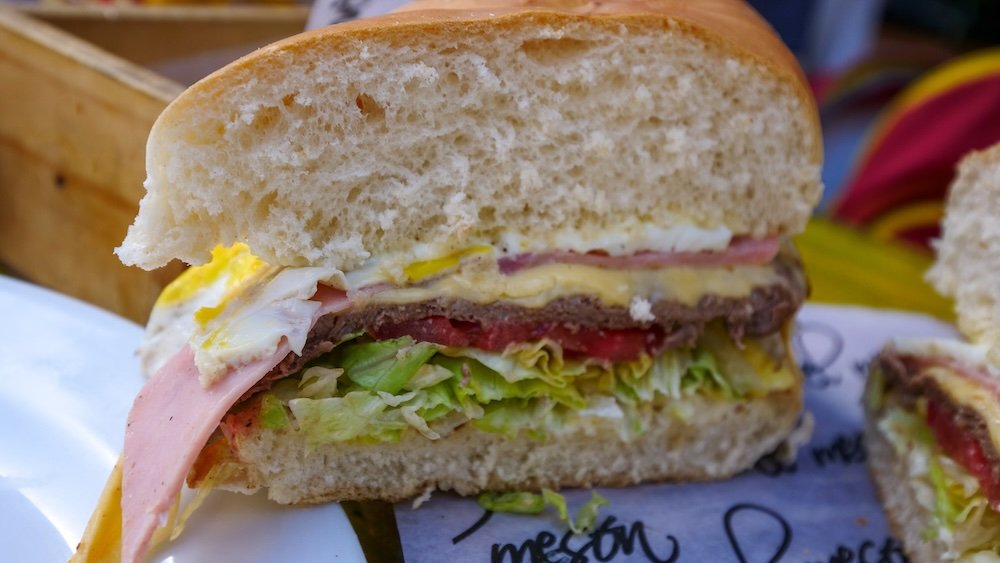
- The Filling: Grilled beef steak, ham, cheese, and sometimes a fried egg, all packed into a soft sandwich roll.
- Popular Street Food: Lomitos are often sold at street food stalls or casual eateries, perfect for a quick meal.
- Side of Fries: No lomito is complete without a side of fries, making it a hearty, indulgent dish.
Tip: For one of the best lomitos in town, stop by Lomitos 348, a local favorite for this classic sandwich.
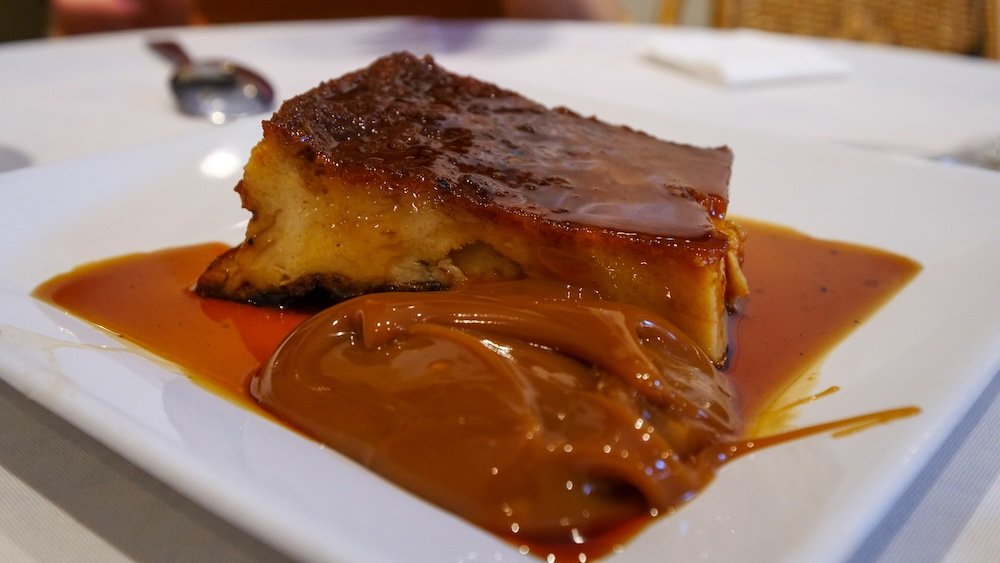
5. Dulce de Leche – A Sweet Delight
Argentina has a major sweet tooth, and dulce de leche is the star of the show. This creamy, caramel-like spread is made by slowly heating sweetened milk until it becomes thick and rich. You’ll find dulce de leche in just about everything, from pastries to ice cream, and it’s impossible to resist. In Córdoba, alfajores (shortbread cookie sandwiches filled with dulce de leche) are a must-try treat, as is helado de dulce de leche, an ice cream flavor that will keep you coming back for more.
- Pastries: Dulce de leche is often used as a filling in cakes, croissants, and pastries.
- Alfajores: These crumbly, delicate cookies filled with dulce de leche are an Argentine favorite.
- Ice Cream: Try helado de dulce de leche, one of the most popular ice cream flavors in Argentina.
Tip: Visit a local confitería (bakery) to sample freshly made alfajores and indulge in all things dulce de leche.
6. Mate – Argentina’s Beloved Drink
No list of Argentine food and drink would be complete without mentioning mate. This traditional herbal tea, made from the yerba mate plant, is more than just a drink—it’s a social ritual. In Córdoba, you’ll see people sharing mate in parks, cafés, or even on the street. The drink is traditionally served in a hollowed-out gourd with a metal straw, and the flavor is earthy, bitter, and unique. It’s often shared among friends and family, making it a symbol of hospitality and community.
- Herbal Tea: Mate is brewed from the dried leaves of the yerba mate plant and enjoyed all over Argentina.
- Shared Experience: Drinking mate is a social activity, with one person pouring and passing it around to others.
- Unique Flavor: The taste is bitter and earthy, and it can be sweetened with sugar or flavored with citrus peel.
Tip: Don’t miss the chance to share mate with locals—it’s the perfect way to immerse yourself in Argentine culture.
7. Fernet and Coke – Córdoba’s Favorite Cocktail
If there’s one drink that defines Córdoba’s nightlife, it’s Fernet and Coke. This iconic cocktail, made with Fernet, a bitter, herbal liqueur, and Coca-Cola, has become the unofficial drink of the city. Originally from Italy, Fernet was brought to Argentina by Italian immigrants, and it quickly became a staple in Córdoba. The strong, bitter taste of Fernet is balanced by the sweetness of the Coke, creating a uniquely refreshing drink that’s perfect for socializing on a warm evening.
- Fernet: A bitter, aromatic spirit made from herbs and spices.
- Cultural Staple: Córdoba is known for its love of Fernet and Coke, and it’s a must-try drink when you’re in the city.
- Refreshing Mix: The sharpness of Fernet is mellowed by the sweetness of Coca-Cola, making for a surprisingly smooth and enjoyable cocktail.
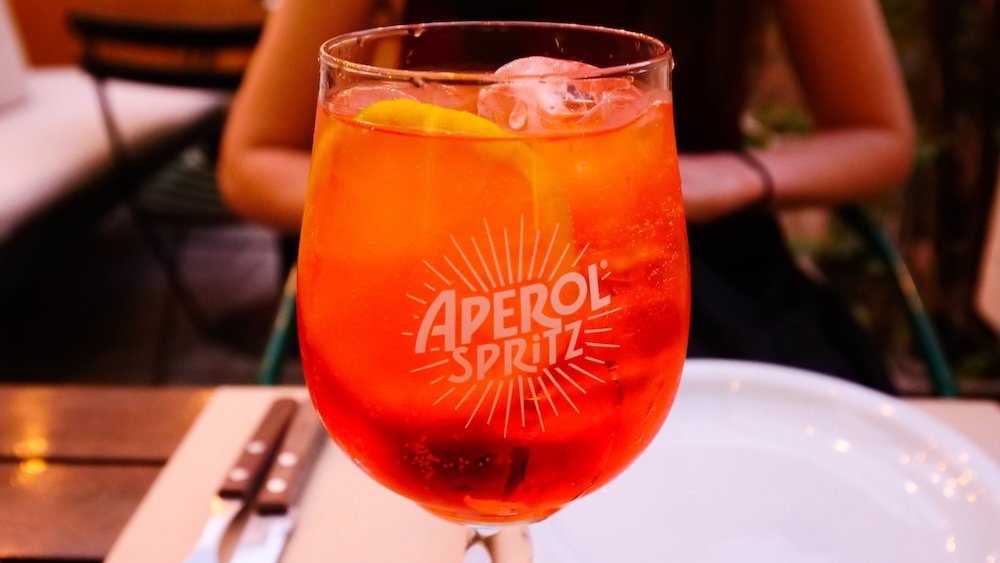
Tip: Head to Güemes or Nueva Córdoba, where you’ll find bars packed with locals enjoying Fernet and Coke well into the night.
8. Choripán – The Perfect Street Food
If you’re wandering through Córdoba and looking for a quick, satisfying bite, choripán is the answer. This popular street food consists of a grilled chorizo sausage served in a crusty roll and topped with tangy chimichurri sauce. It’s simple but bursting with flavor, making it the perfect on-the-go snack. You’ll find choripán stands all over the city, especially around parks and markets, where locals stop by for a quick lunch or a bite after a night out.
- Chorizo: A juicy, flavorful sausage grilled to perfection.
- Toppings: Typically topped with chimichurri, but you can also add other condiments like mustard or pickles.
- Street Food Staple: Choripán is a beloved Argentine street food and can be found at food stalls across Córdoba.
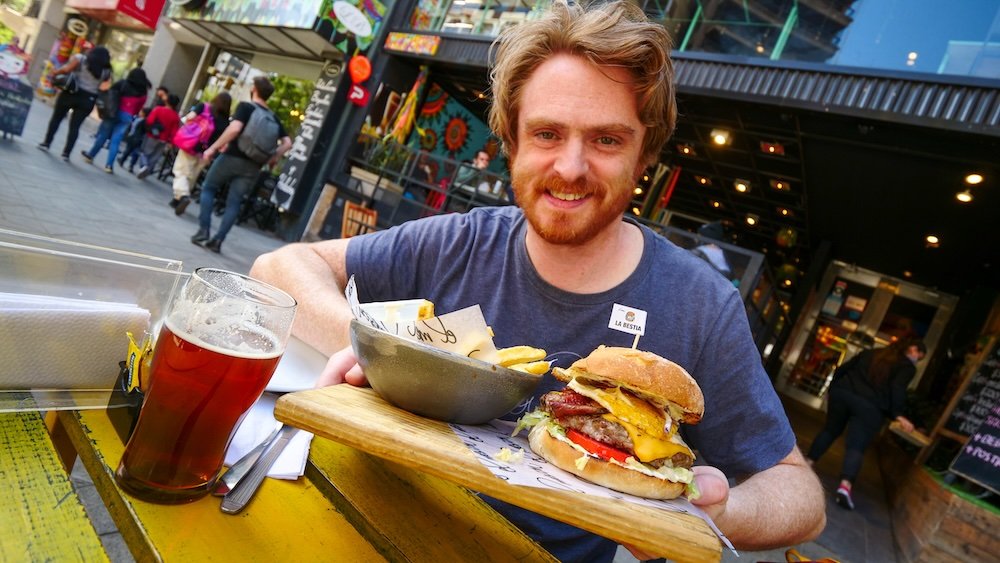
9. Gourmet Burgers – A Trendy Twist on a Classic
In recent years, Córdoba has embraced the global gourmet burger trend, with many restaurants putting their own spin on this classic comfort food. These aren’t your typical fast-food burgers. Think juicy beef patties, topped with ingredients like blue cheese, caramelized onions, bacon, and even fried eggs. Whether you’re craving something simple or a burger with all the gourmet trimmings, you’ll find plenty of options in Córdoba’s bustling food scene. A local favorite like Vaquena Burger is a must try for burger aficionados.
- Gourmet Ingredients: Toppings range from classics like cheddar and bacon to more creative options like blue cheese or guacamole.
- Craft Beers: Many gourmet burger spots offer an extensive selection of Argentine craft beers to pair with your meal.
- Trendy Vibe: These burger joints often have a hip, laid-back atmosphere, perfect for a casual meal with friends.
Tip: Try the Argentine-inspired burgers featuring local flavors like provolone cheese or chimichurri for a unique twist.
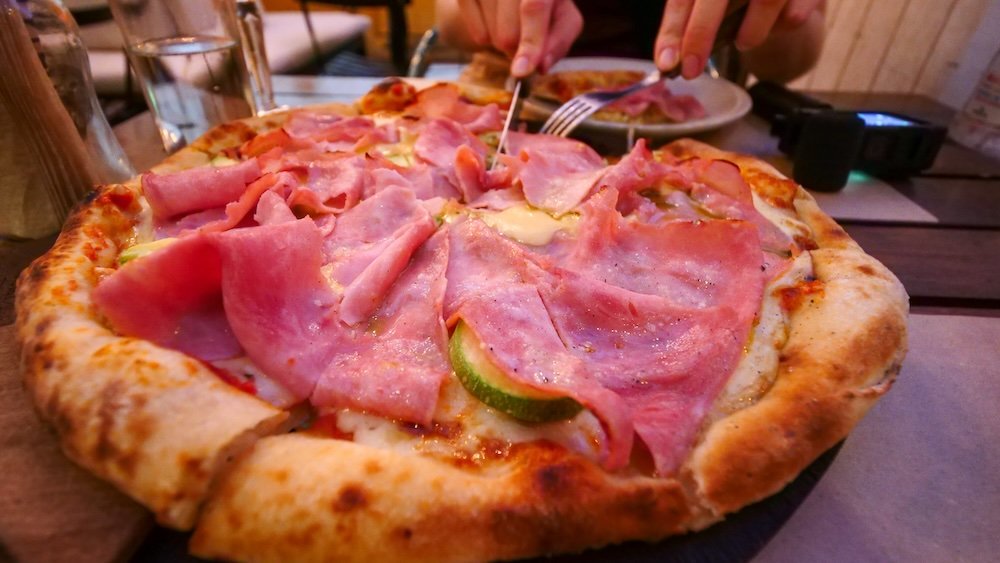
10. International Cuisine
Córdoba may be rooted in Argentine traditions, but it’s also home to a vibrant international food scene that reflects the city’s evolving tastebuds. From sushi to Middle Eastern mezze, and even Italian pasta dishes that rival those of any trattoria, Córdoba offers plenty of options.
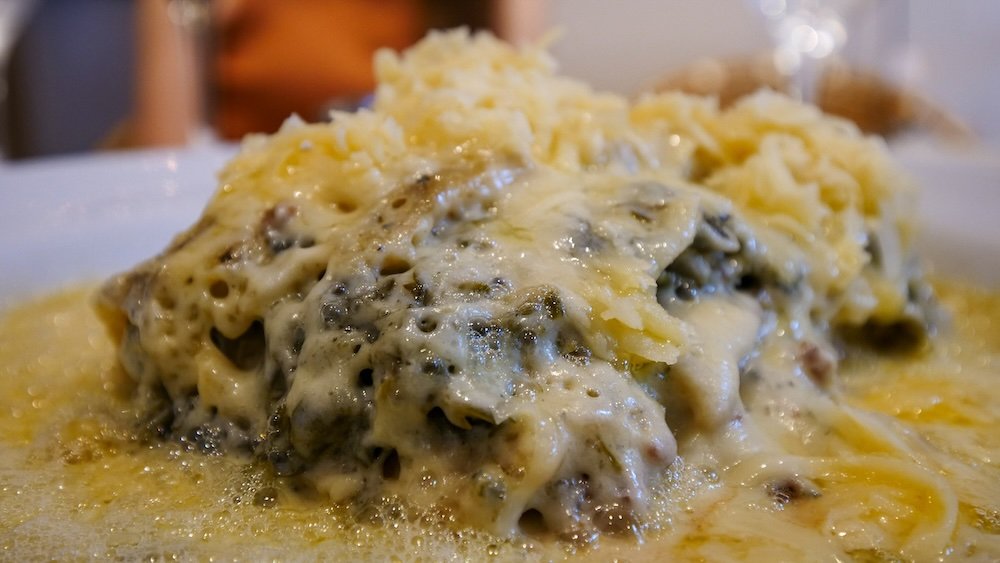
- Sushi and Seafood: Fresh sushi and seafood are growing in popularity, with many restaurants offering inventive sushi rolls and ceviche.
- Italian Classics: Córdoba’s Italian heritage shines through in its pasta dishes, from handmade ravioli to rich lasagna.
- Middle Eastern Cuisine: Try flavorful falafel, kebabs, or hummus at one of the city’s many Middle Eastern restaurants.

Tours For Visitors To Cordoba, Argentina
From guided walking tours through historic streets to day trips into the nearby Sierras, Córdoba City has plenty to offer.
1. Jesuit Block and Estancias Tour
One of the most significant historical landmarks in Córdoba is the Jesuit Block (Manzana Jesuítica), a UNESCO World Heritage site. Taking a guided tour of this area allows you to dive deep into the city’s colonial past and the influence of the Jesuits on its education, religion, and architecture. Many tours will also take you beyond the city to visit the surrounding Jesuit Estancias (ranches), giving you a full picture of the region’s Jesuit heritage.
- Historic Insight: Learn about the Jesuits’ contributions to Córdoba’s development through educational institutions and religious missions.
- Architectural Marvels: Admire the stunning architecture of the Iglesia de la Compañía de Jesús, the oldest church in Argentina.
- Extended Visits: Most tours include a day trip to nearby Estancia Alta Gracia or Estancia Jesús María, where the Jesuit legacy continues.
Tip: Book a tour with a knowledgeable local guide who can share intriguing stories about the Jesuits’ influence on the city.
2. Walking Tour of Plaza San Martín and Surroundings
If you want to explore Córdoba’s city center at a leisurely pace, a walking tour around Plaza San Martín is the perfect way to get acquainted with the city’s historic heart. These tours typically start at the Córdoba Cathedral, a magnificent piece of colonial architecture, and take you through the surrounding streets, showcasing the Cabildo, colonial buildings, and charming plazas. Along the way, you’ll learn about Córdoba’s political history, architecture, and culture.
- Main Square: Wander through Plaza San Martín, Córdoba’s vibrant main square, surrounded by historic landmarks.
- Colonial Architecture: Visit the Córdoba Cathedral and the Cabildo, and learn about their significance during Argentina’s colonial period.
- Local Life: Experience the city’s daily life as locals shop, eat, and socialize in this bustling part of town.
Tip: Take an evening walking tour to see the city beautifully lit up and experience a more tranquil side of Córdoba.
3. Córdoba City Bike Tour
For those who enjoy being active while sightseeing, a bike tour is a fun and efficient way to explore more of Córdoba in less time. Bike tours often cover the city’s highlights, including Parque Sarmiento, the Evita Fine Arts Museum, and Nueva Córdoba. Riding through the city allows you to take in the stunning architecture, green spaces, and local neighborhoods while getting a feel for the city’s youthful and vibrant atmosphere.
- Active Exploration: Bike tours are perfect for covering more ground, from historic landmarks to scenic parks.
- Parks and Museums: Stop at spots like Parque Sarmiento and the Museo Palacio Ferreyra for a blend of culture and nature.
- Neighborhood Vibes: Ride through the trendy neighborhood of Güemes and get a taste of Córdoba’s lively nightlife and street art scene.
Tip: Look for tours that include stops for mate or empanadas so you can fuel up along the way!
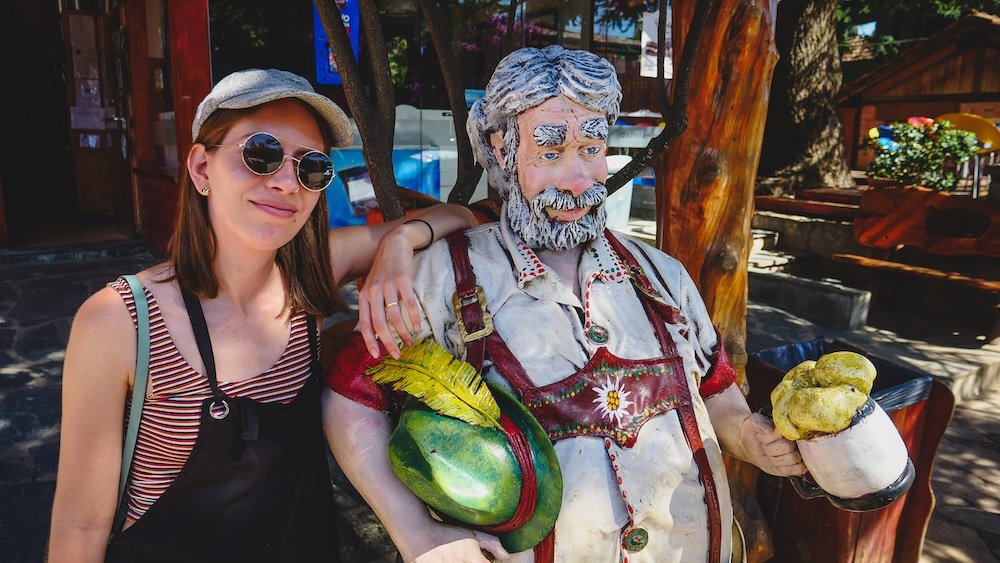
4. Day Trip to the Sierras de Córdoba
For nature lovers, a day trip to the Sierras de Córdoba is a must-do. These rugged mountains just outside the city offer stunning hiking trails, scenic drives, and charming mountain villages like La Cumbrecita and Villa General Belgrano. Whether you’re looking for a tranquil escape or an adrenaline-filled adventure, tours to the Sierras provide the perfect balance of relaxation and exploration.
- Hiking and Nature: Explore breathtaking hiking trails, swim in crystal-clear rivers, or simply enjoy the serene landscapes.
- Mountain Villages: Visit picturesque towns like La Cumbrecita, a car-free village that feels like stepping into a fairy tale, or Villa General Belgrano, known for its German heritage and festivals.
- Outdoor Activities: Many tours offer activities like rock climbing, paragliding, or horseback riding.
Tip: Pack a picnic and spend the afternoon in the great outdoors, soaking in the beauty of the Sierras.
5. Wine Tours in the Calamuchita Valley
If you’re a wine lover, Córdoba’s nearby Calamuchita Valley is a hidden gem for Argentine wine tasting. While Mendoza may be Argentina’s most famous wine region, Córdoba’s boutique wineries offer a more intimate and off-the-beaten-path experience. Wine tours in this region often include tastings of local Malbec, Cabernet, and Torrontés, paired with delicious regional cuisine. You’ll learn about the winemaking process and get a chance to chat with passionate winemakers.
- Boutique Wineries: Visit small, family-owned wineries producing high-quality wines in the heart of the Calamuchita Valley.
- Wine Tasting: Sample local varietals like Malbec and Torrontés while enjoying the stunning vineyard landscapes.
- Gastronomy: Many wine tours include gourmet food pairings, featuring traditional Argentine dishes like empanadas and asado.
Tip: Combine your wine tour with a visit to Villa General Belgrano to enjoy the region’s Bavarian-inspired architecture and culture.

Cordoba Accommodations Guide: Hotels, Guesthouses and Hostels
No matter your style of travel, Córdoba offers accommodations to suit your needs, all within easy reach of the city’s main attractions, vibrant neighborhoods, and cultural hotspots.
1. Luxury Hotels – Comfort and Elegance
For those seeking a touch of luxury, Córdoba offers several high-end hotels that deliver both comfort and elegance. Many of these are located in the heart of the city, offering easy access to Plaza San Martín, Jesuit Block, and the city’s best restaurants and shops. Expect stylish rooms, top-notch amenities, and excellent service to make your stay unforgettable.
- Sofitel La Cañada: Known for its contemporary design, this hotel offers modern rooms, a rooftop pool, and panoramic views of the La Cañada creek.
- Windsor Hotel & Tower: A sophisticated hotel located just steps away from the city’s historical center. Enjoy spacious rooms, an on-site spa, and a gourmet restaurant.
- NH Panorama: With sleek, modern interiors and all the comforts of a luxury hotel, NH Panorama is perfect for those who want style and convenience in the heart of Córdoba.
Tip: If you’re planning a romantic getaway or a special occasion, these luxury hotels often offer spa packages and fine dining experiences to enhance your stay.
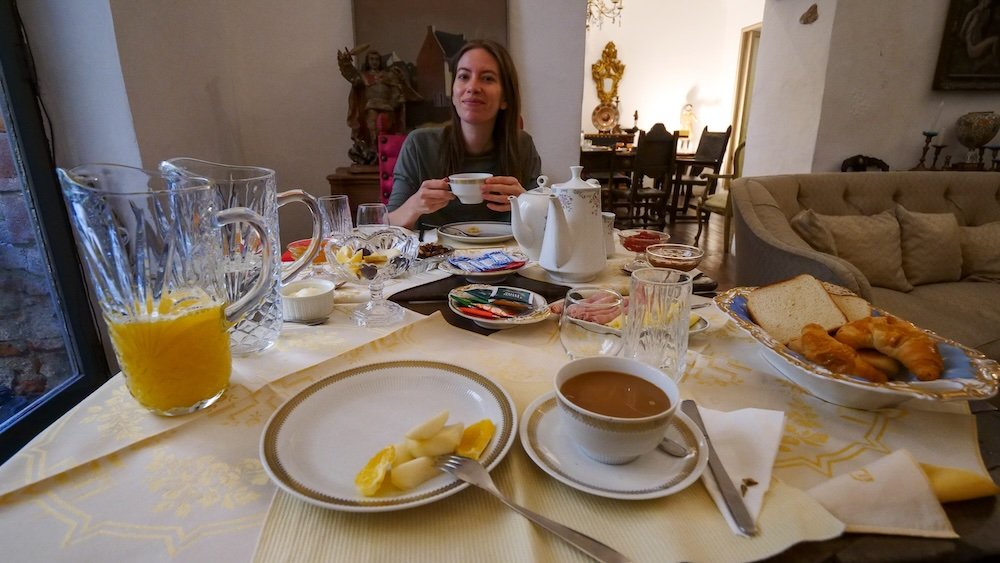
2. Boutique Hotels – Unique Charm and Personalized Service
For a more intimate stay, boutique hotels in Córdoba provide charm, style, and personalized attention. These smaller, independently owned properties often reflect the city’s unique character, blending historic architecture with modern comforts. Many boutique hotels are located in trendy neighborhoods like Nueva Córdoba or Güemes, offering easy access to the city’s cultural scene.
- Azur Real Hotel: A beautifully restored property with a rooftop pool, Azur Real combines historical charm with contemporary luxury. Located close to the Jesuit Block, it’s perfect for travelers who want a blend of history and modernity.
- Hotel de la Cañada: This boutique hotel offers spacious rooms with a serene ambiance, nestled near the La Cañada stream. It’s ideal for those who prefer a quieter setting but still want to be near the city center.
- Yrigoyen 111 Hotel: A chic boutique option in the heart of Nueva Córdoba, known for its stylish design and rooftop pool with city views.
Tip: Many boutique hotels in Córdoba offer unique features like local art displays or customized tours, so ask the staff for recommendations on hidden gems around the city.
3. Guesthouses and B&Bs – Cozy and Authentic
If you’re looking for a more homey and authentic experience, Córdoba has a variety of guesthouses and bed-and-breakfasts that offer cozy accommodations with a personal touch. Staying in a guesthouse allows you to connect with local hosts, who can provide insider tips on exploring the city like a true local. Plus, many guesthouses are located in quieter, residential areas for a peaceful retreat after a day of sightseeing.
- Mate! Hostel: Though it calls itself a hostel, Mate! has the feel of a welcoming guesthouse, offering cozy rooms and a laid-back atmosphere. It’s a favorite among budget travelers who want to feel at home in Córdoba.
- La Querencia: This charming B&B is perfect for those seeking a peaceful and comfortable stay in a more residential neighborhood. With a friendly host and hearty breakfast included, it’s a great option for travelers wanting a quieter experience.
- Cordoba Bed & Breakfast: A centrally located B&B offering clean, comfortable rooms and a warm atmosphere. The hosts are known for their friendliness and willingness to offer advice on how to explore the city.
Tip: Guesthouses often provide a more personal experience, with breakfast prepared by the host and the opportunity to chat with locals about Córdoba’s hidden gems.
4. Hostels – Budget-Friendly and Social
For travelers on a budget or those who enjoy meeting fellow globetrotters, hostels in Córdoba offer affordable accommodations with a social atmosphere. Hostels in the city are often vibrant, with communal areas like rooftop terraces or lounges where guests can relax and mingle. Many hostels also organize activities like city tours, mate tasting sessions, or nights out in Córdoba’s lively Güemes district.
- Aldea Hostel Córdoba: A fun, social hostel with a large rooftop terrace, Aldea Hostel is perfect for budget travelers who want a lively atmosphere and easy access to Córdoba’s nightlife.
- Link Cordoba Hostel: Located in Nueva Córdoba, this hostel has a welcoming vibe, offering dorms and private rooms, along with a cozy lounge area. It’s ideal for solo travelers looking to meet people.
- Onas Hostel & Suites: Known for its stylish design and outdoor pool, Onas Hostel offers a relaxed but social vibe, making it great for travelers who want the amenities of a hotel at hostel prices.
Tip: Look for hostels with community events or group tours, which can help you connect with other travelers and discover Córdoba from a local’s perspective.
source: Nomadic Samuel and That Backpacker via Samuel and Audrey on YouTube
Day Trips From Cordoba, Argentina
While many visitors head to the well-known spots like Villa General Belgrano or La Cumbrecita, there are plenty of underrated destinations nearby that offer just as much adventure. These lesser-known day trips from Córdoba will leave you pleasantly surprised.
1. Alta Gracia – A Town with History and Serenity
Only an hour’s drive from Córdoba, Alta Gracia offers a perfect mix of history, culture, and relaxation. This charming town is best known for the Jesuit Estancia, a UNESCO World Heritage site that reflects the Jesuits’ influence in the region. You can also visit the Casa del Che Museum, where revolutionary leader Che Guevara lived during his childhood. Alta Gracia’s calm atmosphere, tree-lined streets, and rich history make it an ideal escape from the city.
- Jesuit Estancia: Explore this beautifully preserved ranch and learn about its historical significance.
- Che Guevara Museum: Step into the childhood home of one of the most famous figures in world history.
- Relaxing Ambiance: Stroll around the town’s charming streets and enjoy a laid-back vibe with fewer crowds.
Tip: Pack a picnic and head to the Tajamar, a peaceful reservoir near the Jesuit Estancia, for a tranquil afternoon.
2. Quebrada del Condorito National Park – Nature and Wildlife Escape
For those who crave nature and wide-open spaces, Quebrada del Condorito National Park is a true hidden gem. Just 85 kilometers from Córdoba, this park offers sweeping views of rugged cliffs, valleys, and the Condorito Gorge. The park is a haven for bird lovers, with the majestic Andean condor frequently seen gliding overhead. A hike through this stunning natural area gives you a chance to reconnect with nature, enjoy breathtaking views, and experience some of Argentina’s unique wildlife.
- Stunning Landscapes: Experience vast, dramatic views of the gorge and surrounding mountains.
- Wildlife Watching: Keep an eye out for the Andean condor, one of the park’s star attractions.
- Hiking Trails: There are a variety of hiking options, from easy walks to more challenging treks for adventurous visitors.
Tip: Visit early in the day for cooler temperatures and a higher chance of seeing condors soaring through the sky.
3. Río Ceballos – A Hidden Oasis for Outdoor Lovers
If you’re looking for a laid-back, outdoor escape without venturing too far from Córdoba, Río Ceballos is an excellent option. This quaint town is located just 30 kilometers from the city and is surrounded by lush forests, rivers, and mountains. Popular with locals but often overlooked by tourists, Río Ceballos is perfect for hiking, birdwatching, or simply enjoying a peaceful picnic by the river. For the more adventurous, a hike to the nearby Dique La Quebrada offers incredible views and a great spot for a swim.
- Dique La Quebrada: A scenic dam surrounded by hiking trails and perfect for swimming or kayaking.
- Hiking and Nature: Trails around Río Ceballos offer varying levels of difficulty and are ideal for exploring the area’s natural beauty.
- Birdwatching: The region is home to a wide variety of birds, making it a favorite spot for nature enthusiasts.
Tip: After your hike, head to one of the local cafés in town to relax and try facturas (Argentine pastries).
4. Capilla del Monte – Mystical Energy and Majestic Mountains
For something completely different, head to Capilla del Monte, a town famous for its mystical energy and views of the towering Cerro Uritorco. Located about two hours from Córdoba, Capilla del Monte is a must-visit for those seeking both adventure and spiritual experiences. Hike the trails leading up to Cerro Uritorco, the highest peak in the Sierras Chicas, or explore the town’s quirky shops and cafés, many of which cater to those seeking healing or spiritual guidance.
- Cerro Uritorco: A challenging hike with rewarding views of the surrounding mountains and valleys.
- Mystical Atmosphere: The town is known for its spiritual and mystical vibe, attracting visitors interested in alternative healing and energy.
- Unique Shops and Cafés: Wander through the town’s eclectic mix of shops selling crystals, incense, and local crafts.
Tip: If you’re visiting during the summer months, check out the Alien Festival, a quirky event that celebrates the town’s reputation for UFO sightings.
5. San Marcos Sierras – A Bohemian Retreat
For a truly off-the-beaten-path experience, visit San Marcos Sierras, a small, bohemian village nestled in the Sierras de Córdoba. Known for its alternative lifestyle, organic farms, and laid-back vibe, San Marcos Sierras is the perfect place to disconnect and unwind. The village is home to artists, musicians, and nature lovers, making it a haven for those seeking a slower pace of life. Enjoy the natural surroundings, visit the local artisan markets, and take a dip in the nearby rivers.
- Organic Farms: Explore the surrounding countryside, filled with small farms producing organic honey, olives, and herbs.
- Art and Crafts: Visit the town’s artisan market to find unique, handcrafted goods made by local artists.
- Natural Swimming Spots: Cool off in the crystal-clear rivers that flow through the area.
Tip: Visit on a weekend to experience the vibrant artisan market and connect with local craftspeople and artists.

Cordoba Transportation Guide
Navigating Córdoba City is fairly straightforward, with plenty of ways to get around. Here’s a detailed breakdown of your transportation options in Córdoba.
1. Public Buses – Affordable and Reliable
Córdoba’s public bus system is the most widely used form of transportation in the city. It’s affordable and covers virtually every corner of Córdoba, making it a great option for travelers on a budget. Buses are identified by numbers and colors, and most routes pass through key areas like Nueva Córdoba, Plaza San Martín, and Jesuit Block.
2. Taxis and Ridesharing – Quick and Convenient
Taxis are metered, and while slightly more expensive than buses, they offer convenience, especially for short distances or late-night trips. Ridesharing apps tend to be more popular with locals and offer competitive rates, so they’re a good option for getting around the city or heading out to neighborhoods like Güemes for a night out.
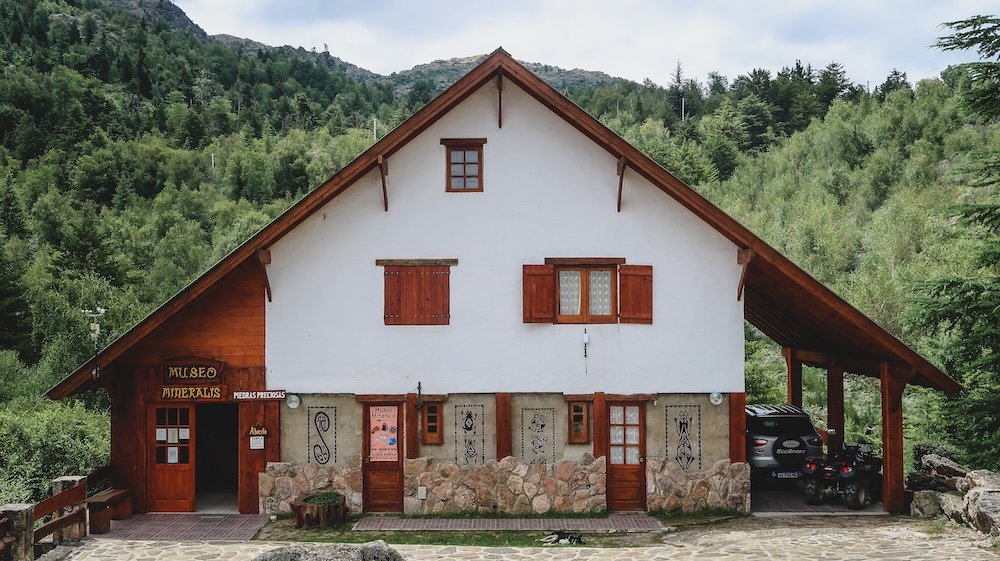
3. Rental Cars – Explore at Your Own Pace
For travelers looking to explore beyond the city, renting a car is an excellent option. Having a car gives you the flexibility to visit nearby destinations like the Sierras de Córdoba or take a day trip to Alta Gracia. Major international rental companies, as well as local agencies, operate within the city, and renting a car can be arranged directly at the Ingeniero Aeronáutico Ambrosio L.V. Taravella International Airport or in the city center.
- Freedom to Explore: Having a car allows you to venture out to places like Villa General Belgrano or the Quebrada del Condorito National Park at your own pace.
- Easy Rental: Most car rental agencies are located either at the airport or near the bus terminal.
- Affordable Fuel: Gas is relatively affordable in Argentina, making road trips a budget-friendly option.
4. Biking – Eco-Friendly and Scenic
Córdoba is becoming more bike-friendly, with new bike lanes popping up in central areas like Nueva Córdoba and along La Cañada. Renting a bike is a great way to see the city at a leisurely pace while also cutting down on transportation costs. Several bike rental shops are available throughout the city, and some hostels even offer free or discounted bikes for guests. Parque Sarmiento is especially popular for cycling, with wide paths and plenty of greenery to enjoy along the way.
5. Walking – The Best Way to Explore the City Center
When it comes to exploring Córdoba’s historic center, nothing beats walking. Many of the city’s top attractions, such as the Jesuit Block, Córdoba Cathedral, and the Cabildo, are located within close proximity of each other, making it easy to discover the area on foot. The pedestrian-friendly streets of Nueva Córdoba and Güemes also offer a charming backdrop for strolling, with plenty of cafés, shops, and street art to enjoy along the way.
- Pedestrian-Friendly: The city center is ideal for walking, with most attractions located close to each other.
- Cultural Hotspots: Stroll through Nueva Córdoba and Güemes to explore galleries, cafés, and vibrant street art.
- Plaza San Martín: Start your walking tour here, as it’s surrounded by some of the most iconic historical landmarks.
source: Samuel and Audrey on YouTube
Where To Visit After Your Trip To Cordoba?
Whether you’re looking to explore more of the Sierras, immerse yourself in the wine culture of Mendoza, or dive into the hustle and bustle of Buenos Aires, there’s no shortage of incredible places to visit after your time in Córdoba.
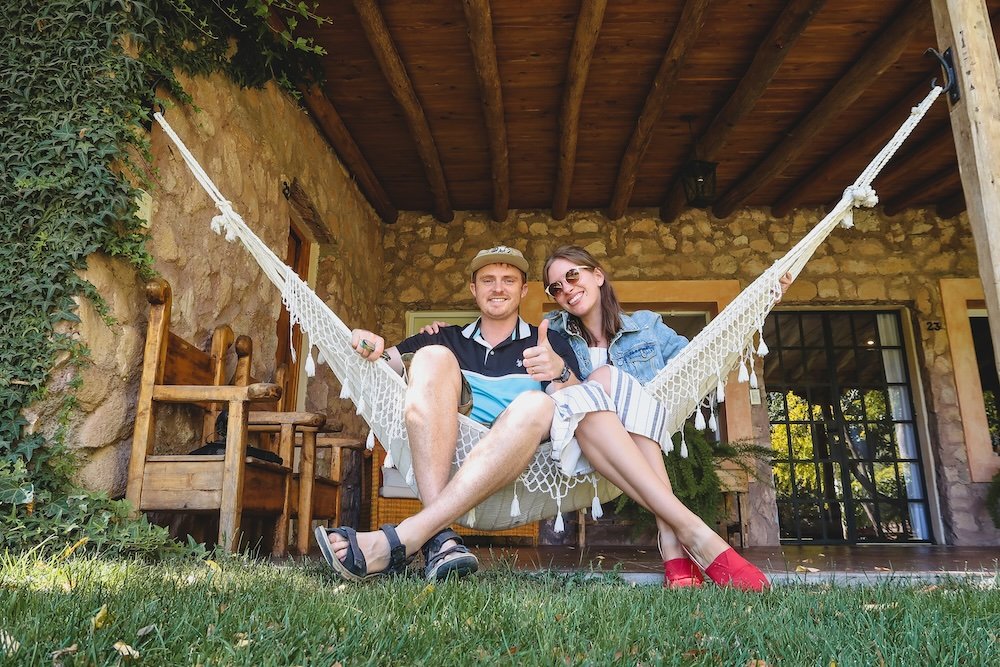
1. Mendoza – Wine, Mountains, and Adventure
If you’re a wine lover or simply seeking breathtaking landscapes, Mendoza should be next on your itinerary. Famous for its Malbec wine and stunning views of the Andes Mountains, Mendoza is Argentina’s premier wine region. Just a quick flight or an overnight bus from Córdoba, Mendoza offers everything from vineyard tours to adventure sports like hiking, rafting, and even skiing in the winter.
- Wine Tasting: Explore the lush vineyards and sample world-renowned Malbec in Argentina’s wine capital.
- Andes Mountains: Mendoza’s backdrop offers stunning opportunities for outdoor activities like hiking, climbing Aconcagua, or cycling through scenic routes.
- Relax and Unwind: Enjoy a slower pace of life with plenty of spa resorts, cozy wine lodges, and gourmet restaurants.
Tip: Book a vineyard bike tour for a scenic and active way to experience Mendoza’s famous wineries.
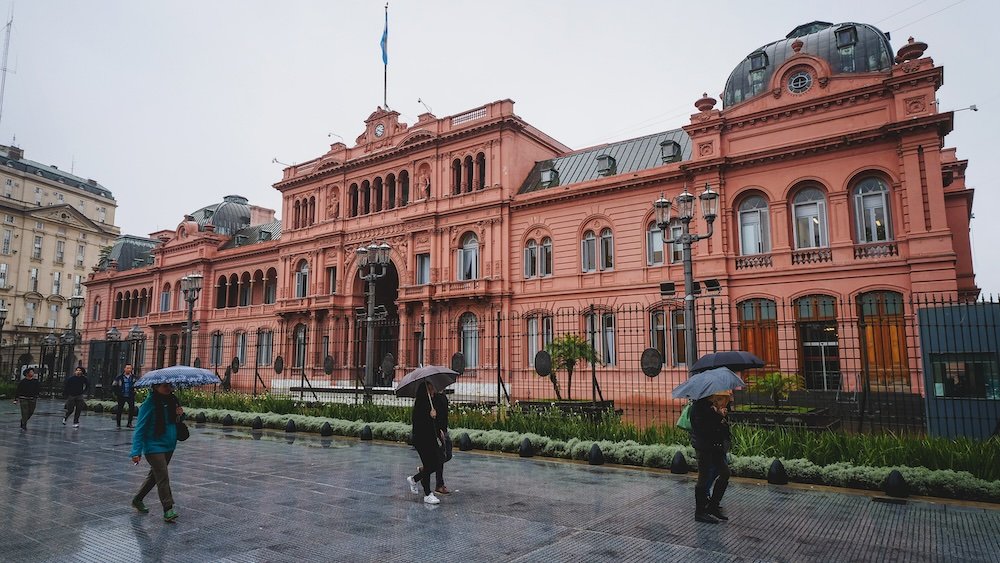
2. Buenos Aires – Argentina’s Thriving Capital
If you haven’t yet visited Buenos Aires, now’s the time to dive into the country’s electric capital. Just a quick flight or an 8-hour bus ride from Córdoba, Buenos Aires offers a completely different experience—think European architecture, buzzing nightlife, and rich cultural experiences. From dancing the tango in San Telmo to enjoying steak in the vibrant neighborhood of Palermo, Buenos Aires is a city that never sleeps.
- Tango and Culture: Experience a tango show or join a dance class to immerse yourself in the city’s passionate spirit.
- Historical Sights: Visit iconic landmarks like the Casa Rosada, Recoleta Cemetery, and the Obelisco.
- Nightlife and Dining: Buenos Aires’ nightlife is legendary—enjoy the city’s array of restaurants, bars, and late-night milongas.
Tip: Head to Palermo for a blend of nightlife, boutique shopping, and some of the best restaurants in the city.

3. Salta – A Taste of the Northwest
For a completely different vibe, head to Salta, a picturesque town in the northwest of Argentina known for its colonial architecture, Andean culture, and striking landscapes. Often called “Salta La Linda” (Salta the Beautiful), this region offers vibrant red-rock canyons, vast deserts, and quaint mountain villages. You can explore pre-Inca ruins, sample hearty Andean cuisine, and sip on some of Argentina’s best Torrontés wine.
- Colonial Charm: Wander through the streets of Salta’s well-preserved colonial center, complete with cobblestone streets and historic churches.
- Stunning Landscapes: Take day trips to natural wonders like the Quebrada de Humahuaca or the surreal salt flats of Salinas Grandes.
- Rich Culture: Experience local traditions, colorful markets, and indigenous festivals that give you a true sense of Argentine Andean life.
Tip: For an unforgettable experience, take the Train to the Clouds through the dramatic scenery of the Andes.
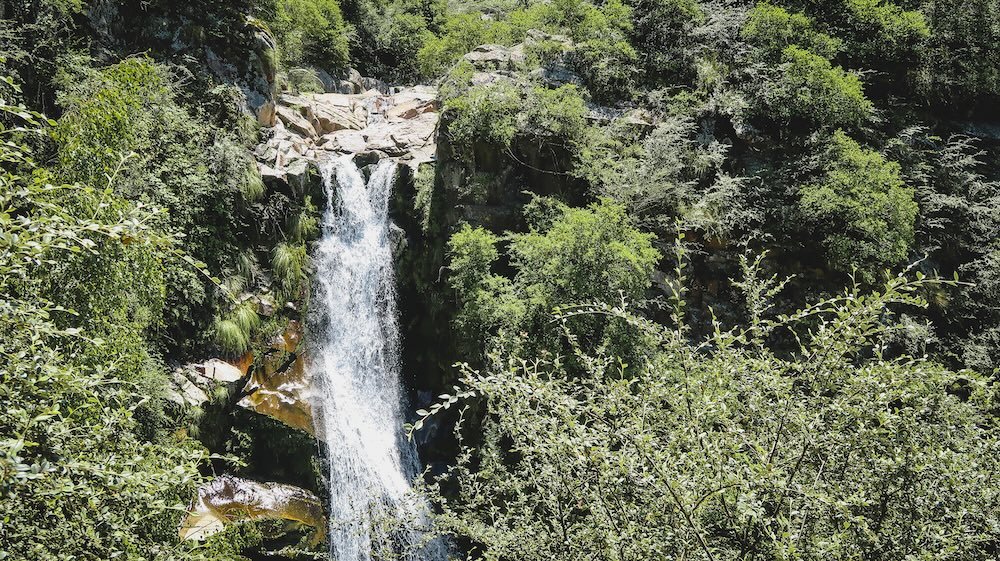
4. The Sierras de Córdoba – An Outdoor Escape
If you didn’t get enough of the stunning Sierras de Córdoba during your stay in the city, why not extend your adventure? The Sierras offer tranquil villages, outdoor activities, and the chance to unwind in nature. You can visit the German-inspired town of Villa General Belgrano, relax in the car-free village of La Cumbrecita, or hike through Quebrada del Condorito National Park for an up-close view of the majestic Andean condors.
- Outdoor Activities: The Sierras are perfect for hiking, swimming, horseback riding, and birdwatching.
- Charming Villages: Explore small towns like Villa General Belgrano or Alta Gracia, each offering unique cultural experiences and beautiful scenery.
- Nature Retreat: If you’re looking to escape the crowds, the Sierras are the perfect place to relax in serene landscapes.
Tip: Plan a multi-day stay in one of the rustic cabins or charming B&Bs scattered across the Sierras for a peaceful retreat.

Cordoba Travel Guide: Final Thoughts
Córdoba City is a place that knows how to keep you on your toes. Whether you’re gazing up at colonial architecture, sipping Fernet and Coke with locals, or wandering through hidden alleys filled with street art, Córdoba is forever a dynamic city.
1. Where The Past Meets The Present
In Córdoba, history isn’t confined to museums—it flows through the streets, whispers in the Jesuit Block, and radiates from the towering Córdoba Cathedral. But this isn’t a place that’s stuck in the past. While you’re strolling through centuries-old plazas, you’ll also feel the pulse of modern life. Students fill the cafés and street performers liven up the corners.
- Time Travel: The Jesuit Block takes you straight back to the 17th century, while the lively Güemes neighborhood pulls you right into the present.
- Living History: Even in the historic parts of town, Córdoba’s streets are filled with young energy, making the city feel like an ever-evolving story.
- Architectural Wonders: From Baroque cathedrals to modern street art, the city is a visual blend of eras.
Tip: Take a break on a bench in Plaza San Martín and let the city’s history soak in. You’ll feel the past mixing with the present in the most subtle, magical ways.
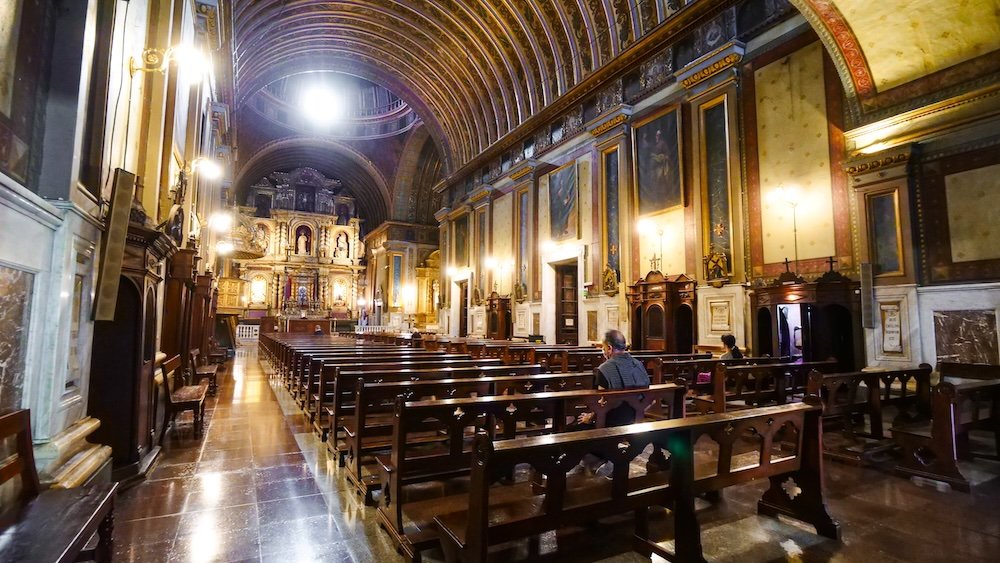
2. Culture Around Every Corner
Córdoba is a city that lives and breathes culture. Whether you’re into art, music, or simply people-watching from a cozy café, you’ll find it all here.
- Street Art Scene: Head to Nueva Córdoba or Güemes for colorful murals and street performances. The vibe here is young, rebellious, and full of life.
- Music and Tango: Wander into a milonga and watch locals dance the tango—or better yet, join in yourself.
- Food with Soul: From local empanadas to gourmet burgers, Córdoba’s food scene is as varied and flavorful as the city itself.
Tip: Don’t miss the Paseo de las Artes market in Güemes on the weekend. It’s where Córdoba’s creative energy truly shines, with artists selling their handmade crafts in a vibrant, bohemian atmosphere.
3. Gateway to Adventure
Córdoba is surrounded by nature’s playground—the Sierras de Córdoba. Whether you’re into hiking, paragliding, or just taking in sweeping views, the Sierras offer a perfect escape from the city’s hum. Picture yourself wandering through quaint mountain villages, dipping your toes in crystal-clear rivers, or spotting Andean condors soaring overhead. It’s all just a short drive away, and yet, it feels like another world.
- Sierra Magic: Explore La Cumbrecita, a fairytale-like, car-free village nestled in the hills, or head to Alta Gracia to visit its famous Jesuit Estancia.
- Nature’s Playground: From rugged hiking trails in Quebrada del Condorito National Park to the peaceful banks of the Dique San Roque, the region is perfect for outdoor lovers.
- Adventure Awaits: Whether it’s horseback riding, rock climbing, or simply watching the sunset from a mountaintop, the Sierras offer endless opportunities for adventure.
Ode To Cordoba City
In Cordoba’s embrace, a world unfolds, Where history’s tales and legends are told. Colonial streets, with charm untold, Reveal a past of stories, vibrant and bold.
Cathedral towers, reaching high above, Whisper secrets of faith and love. Jesuit heritage, a treasure trove, Guiding footsteps on cobblestone coves.
Festivals ignite, the air comes alive, With music and dance, the soul will thrive. From Colectividades to Folklore’s dive, Cordoba’s spirit, forever will survive.
Nature’s wonders, a breathtaking sight, Sierras of beauty, bathed in golden light. Mountains majestic, soaring with might, Lakes and valleys, nature’s pure delight.
Locro’s aroma, tantalizing the air, Asado’s sizzle, a savory affair. Empanadas, flavors beyond compare, Cordoba’s cuisine, a culinary prayer.
Marketplaces bustling, vibrant and grand, With colors and flavors at every hand. From Mercado Norte to gourmet strand, A culinary journey, a taste so grand.
As you bid farewell to Cordoba’s embrace, Carry memories, each a precious trace. A city that captures hearts with grace, A journey of discovery, in this enchanting place.
So let your spirit wander, explore with glee, Cordoba’s magic, forever will be. A destination where dreams are set free, Come, traveler, and let your soul be free.
